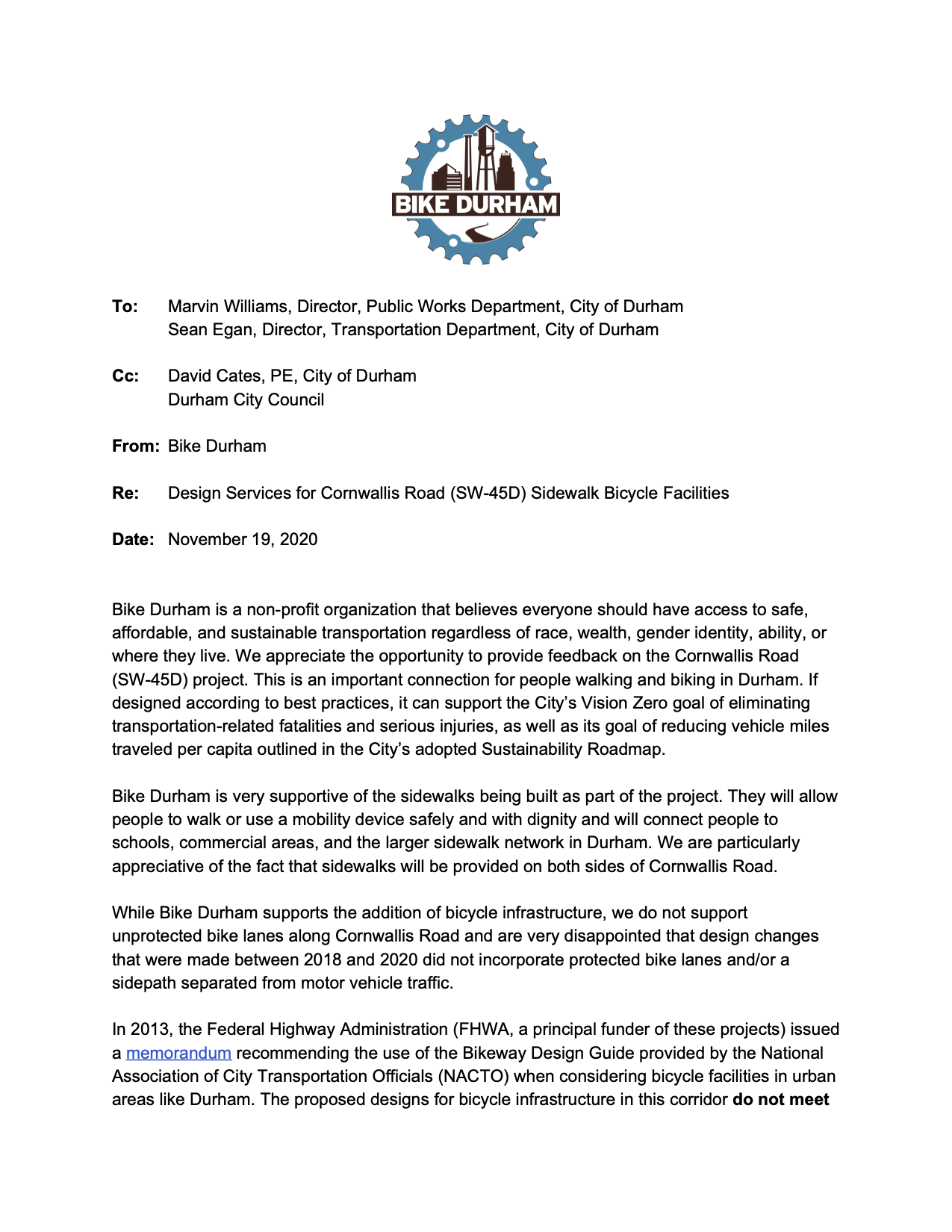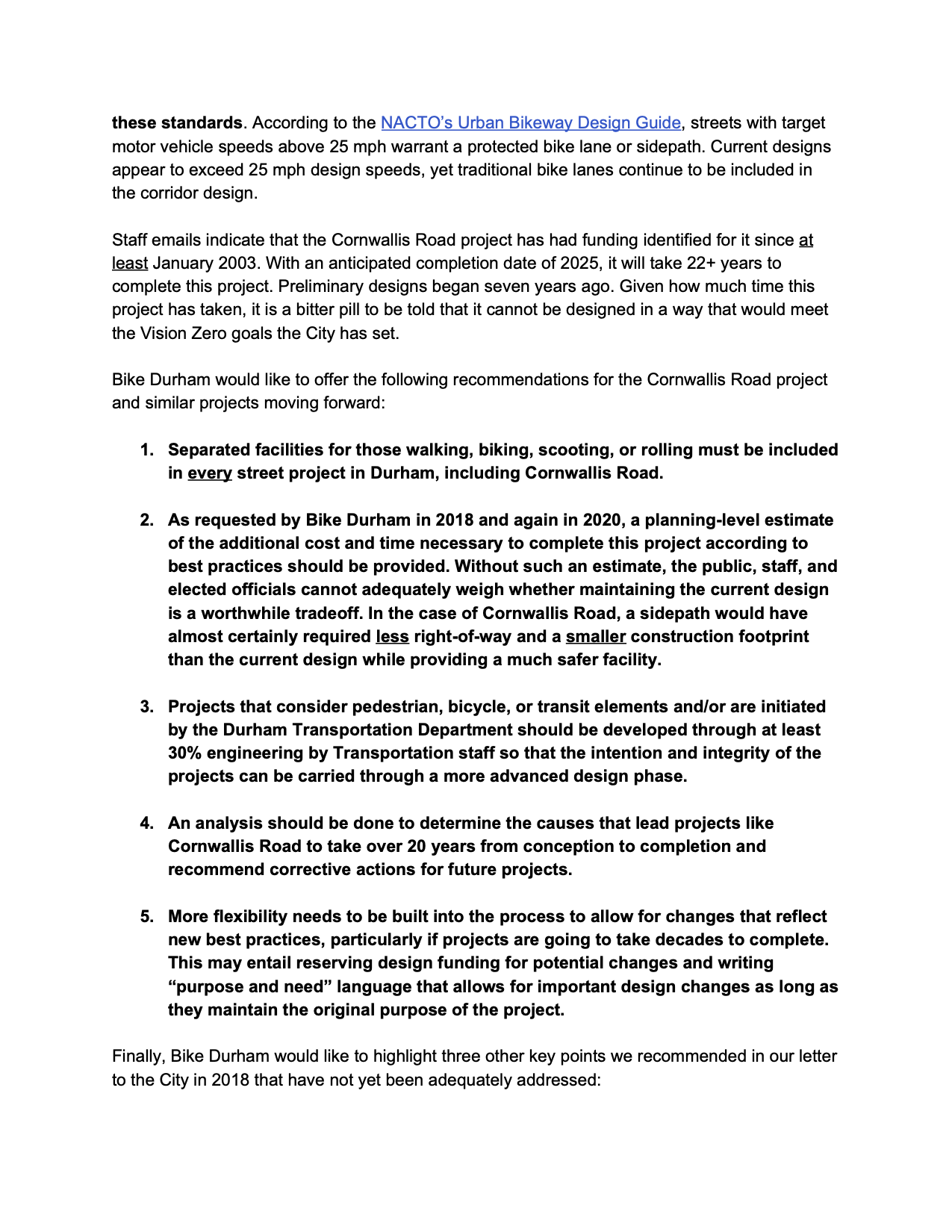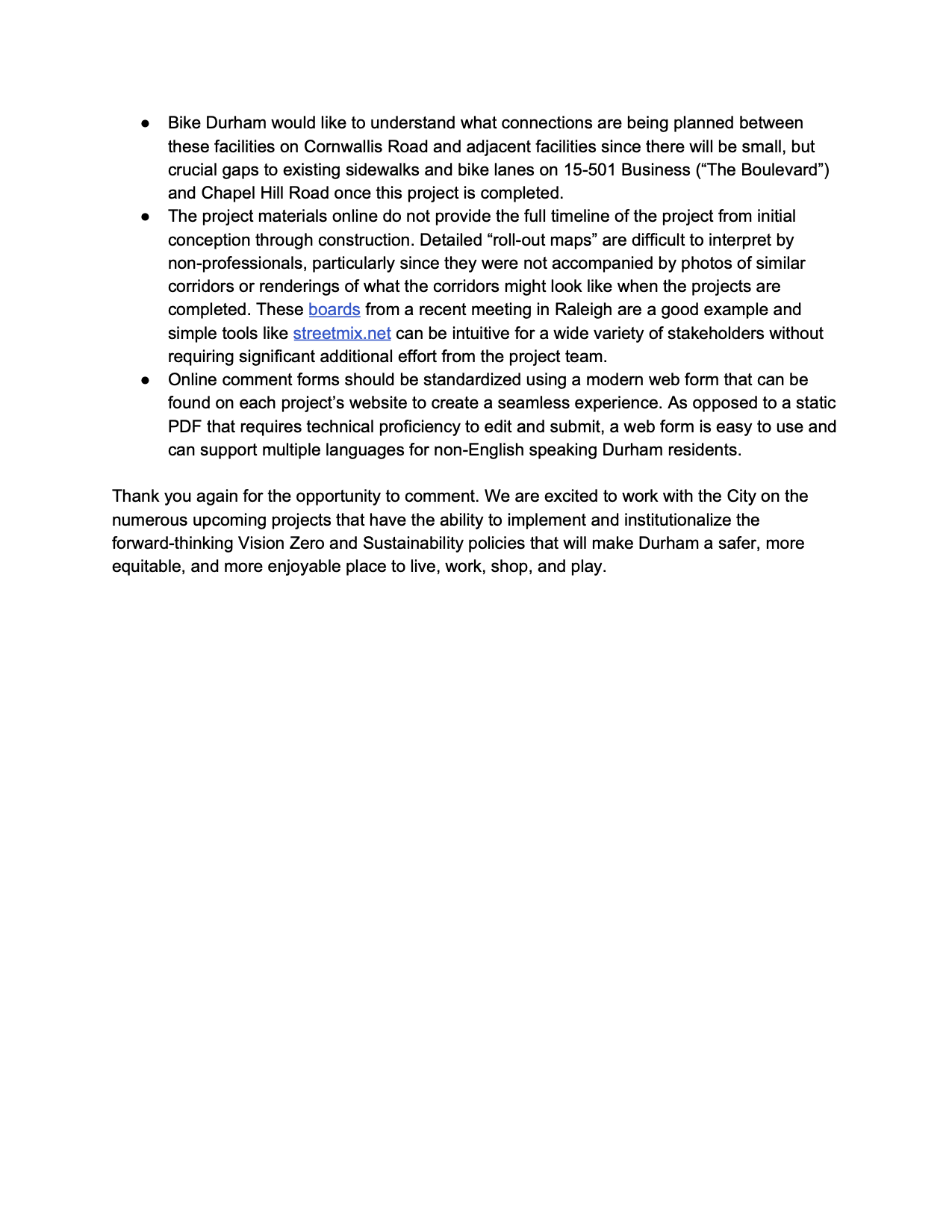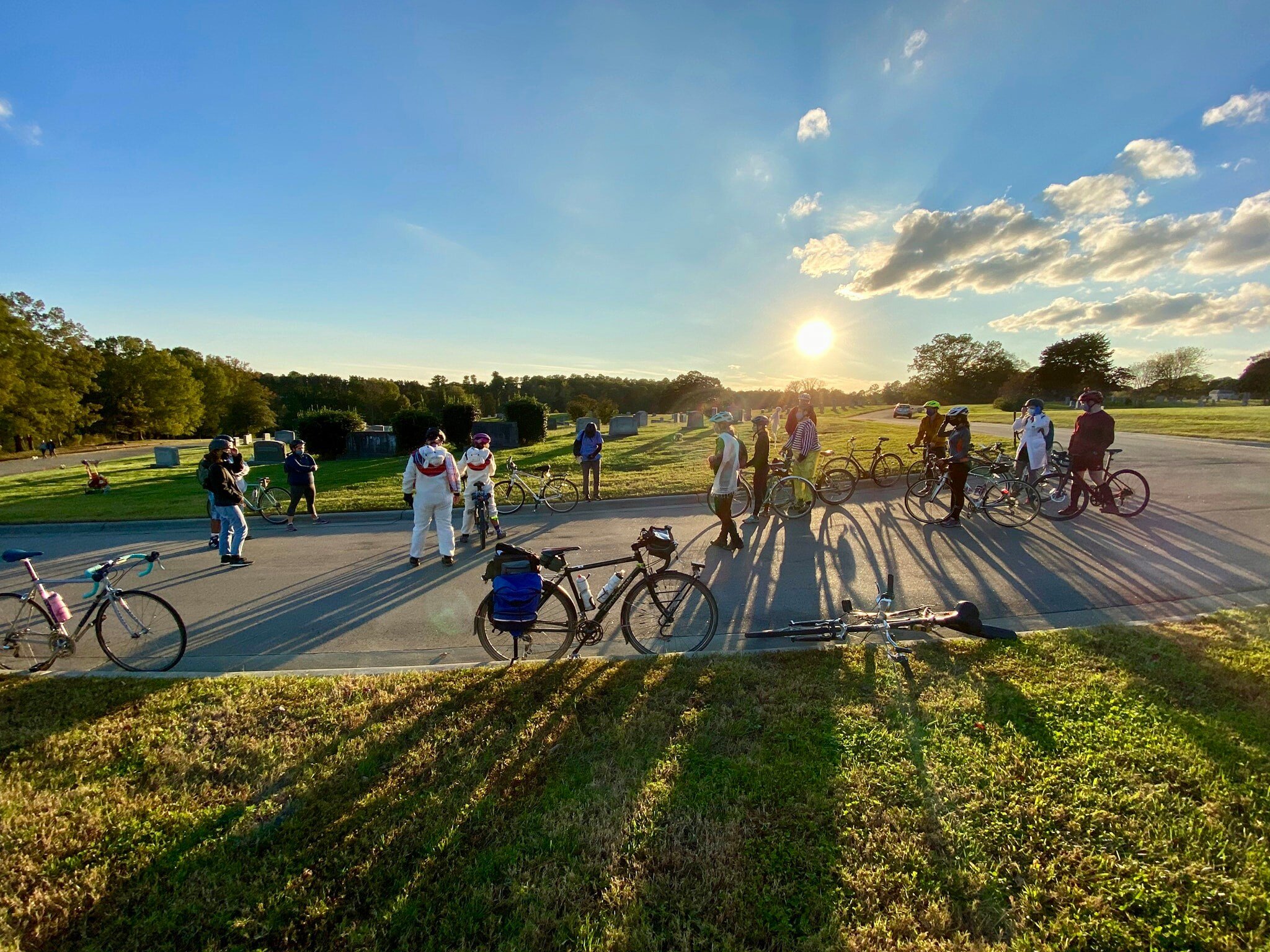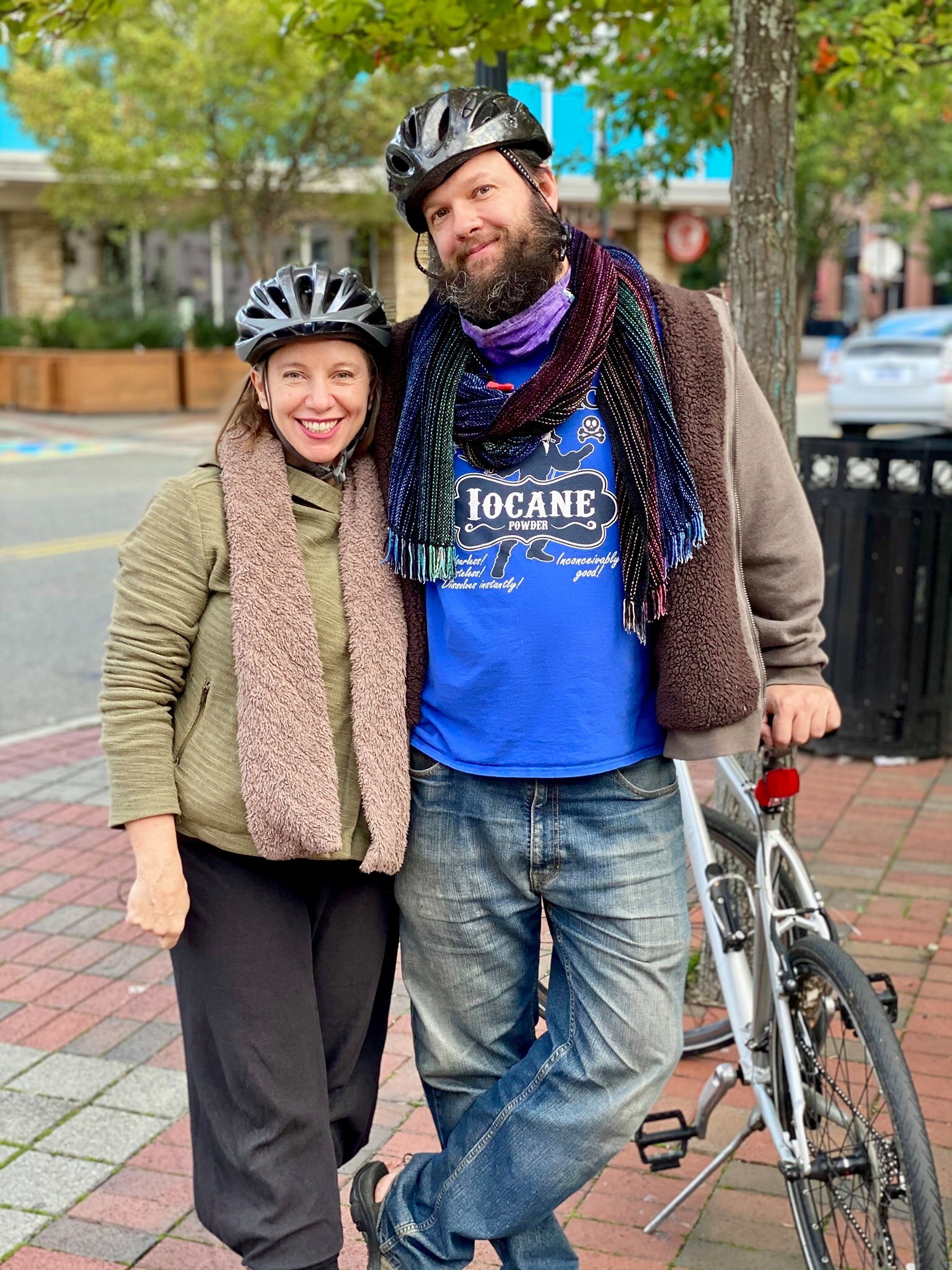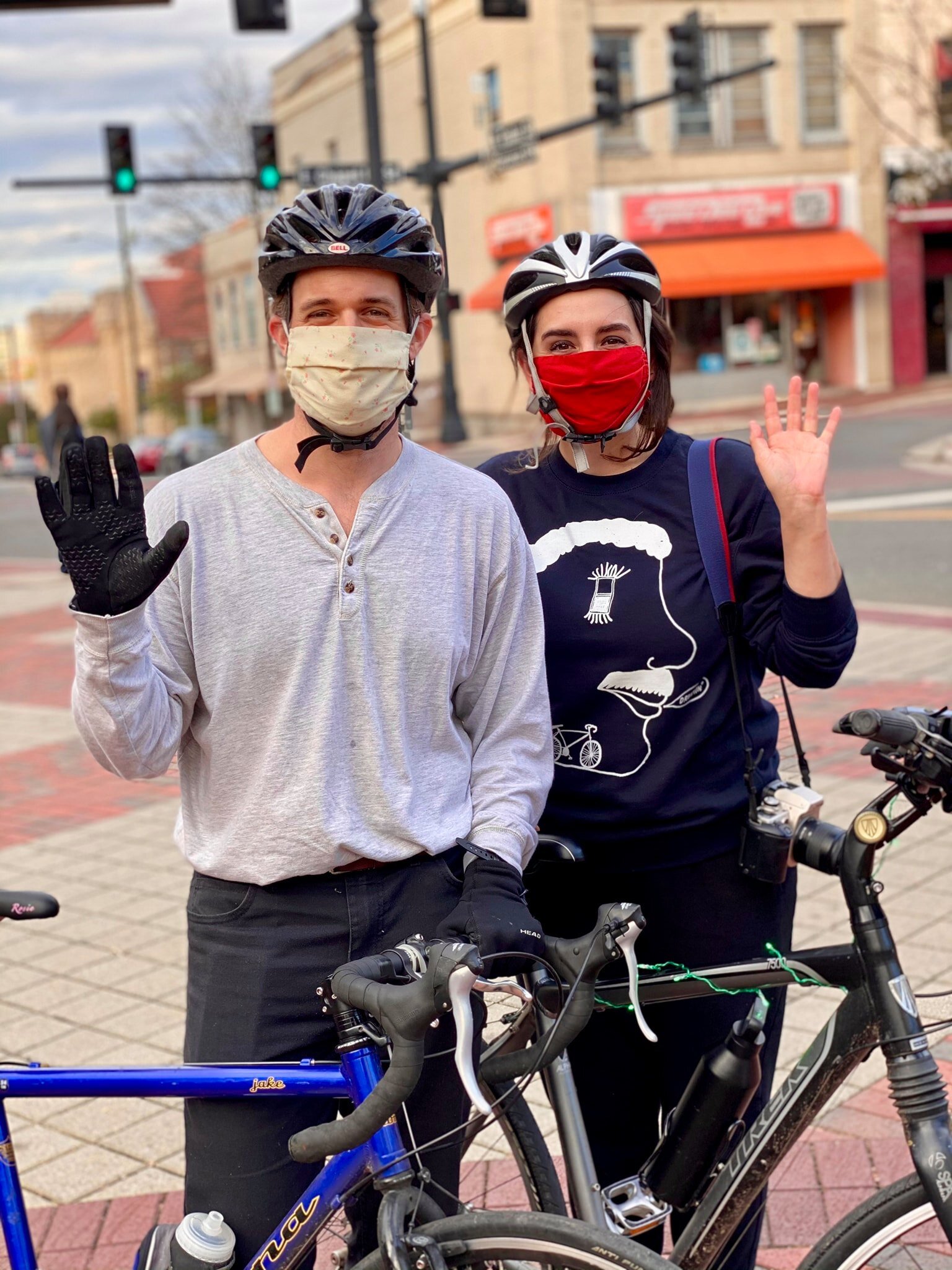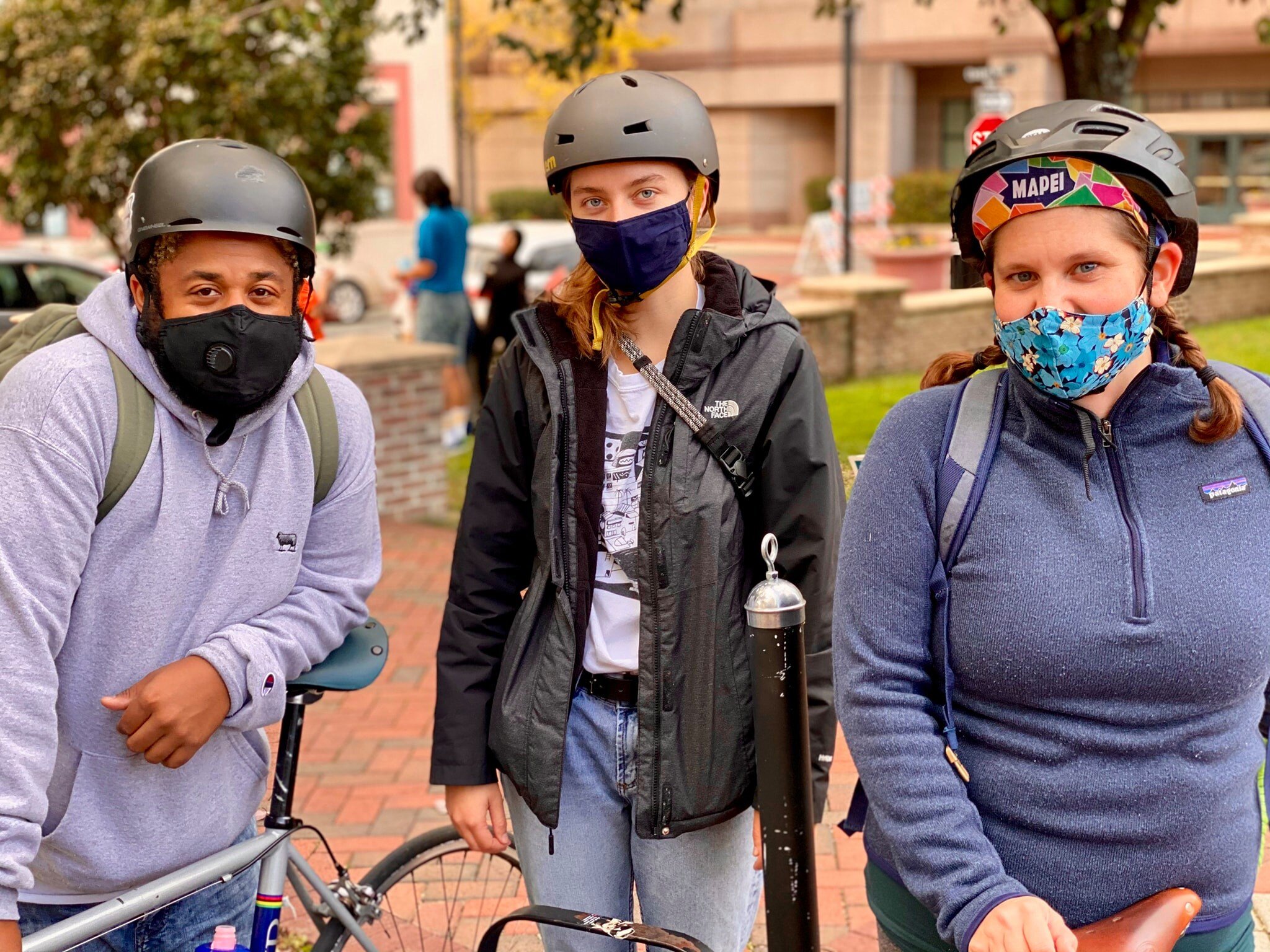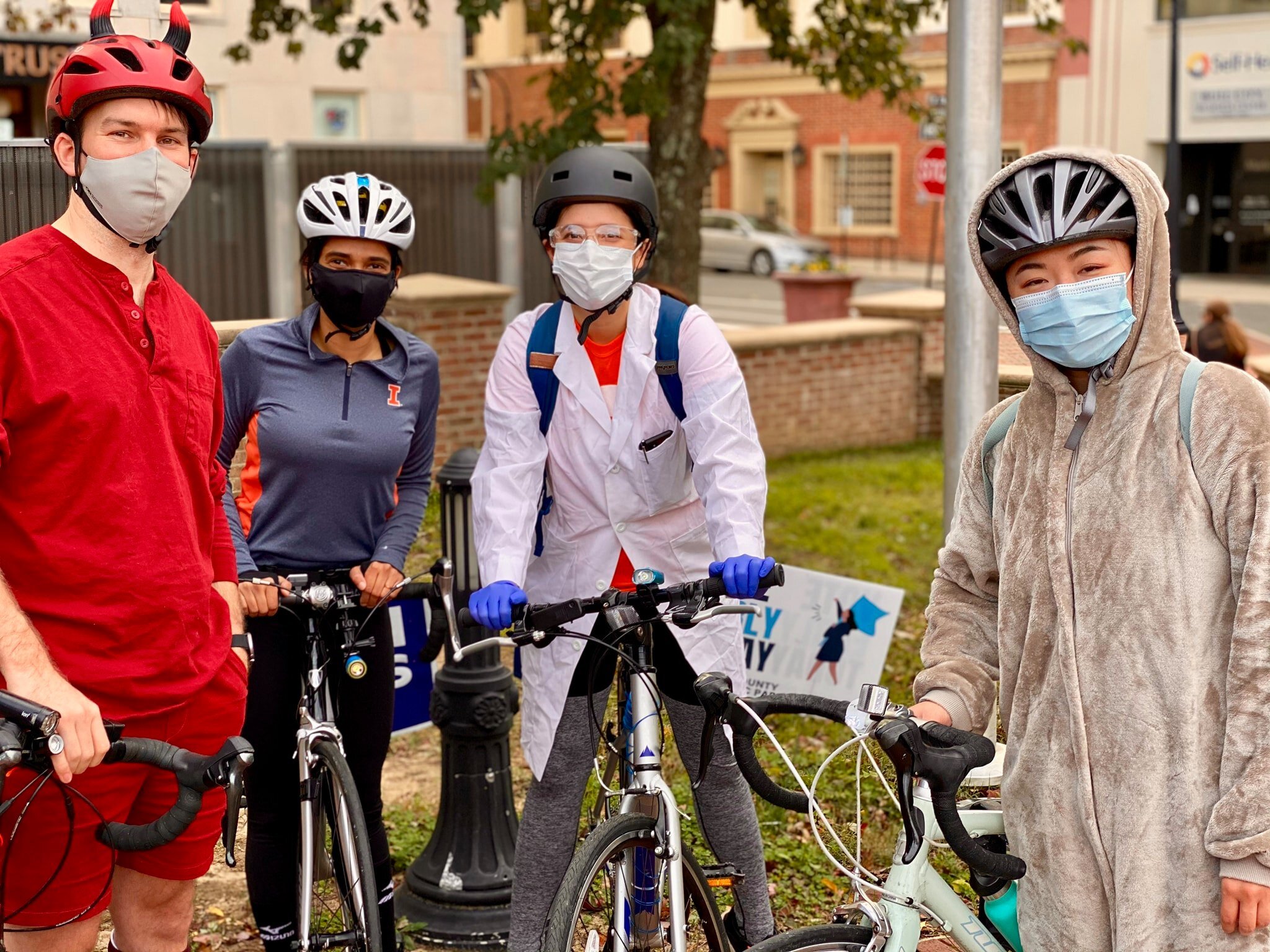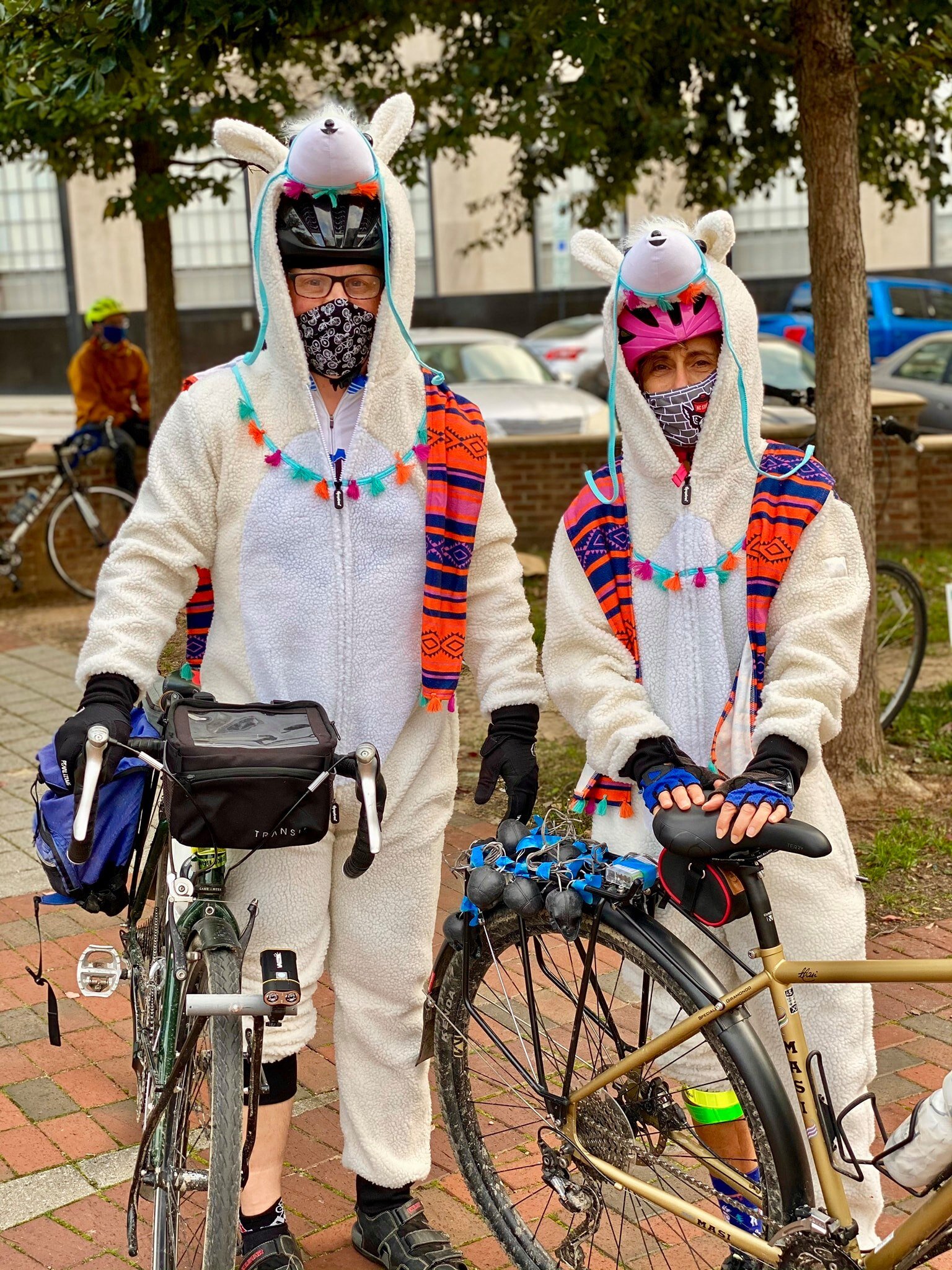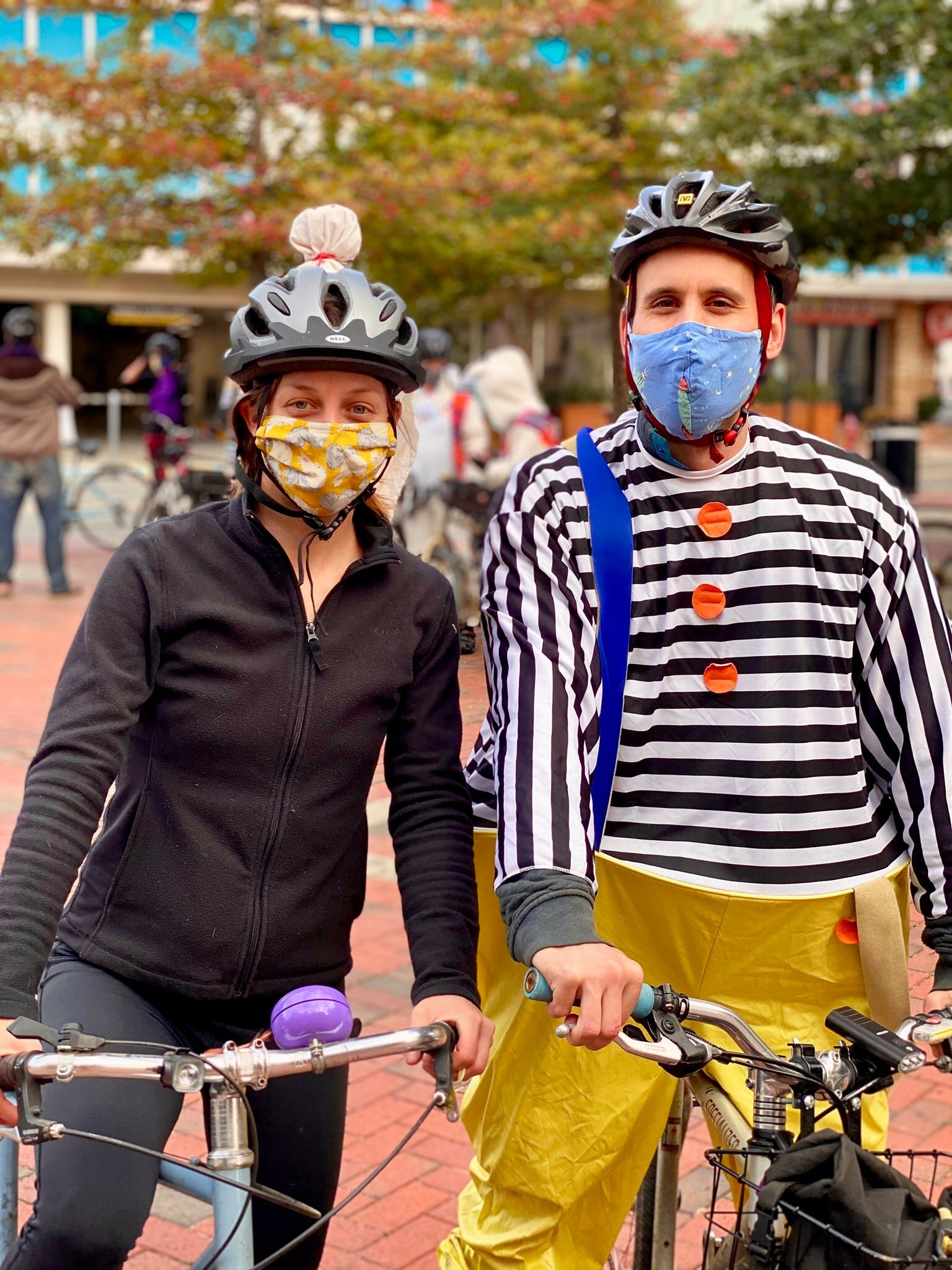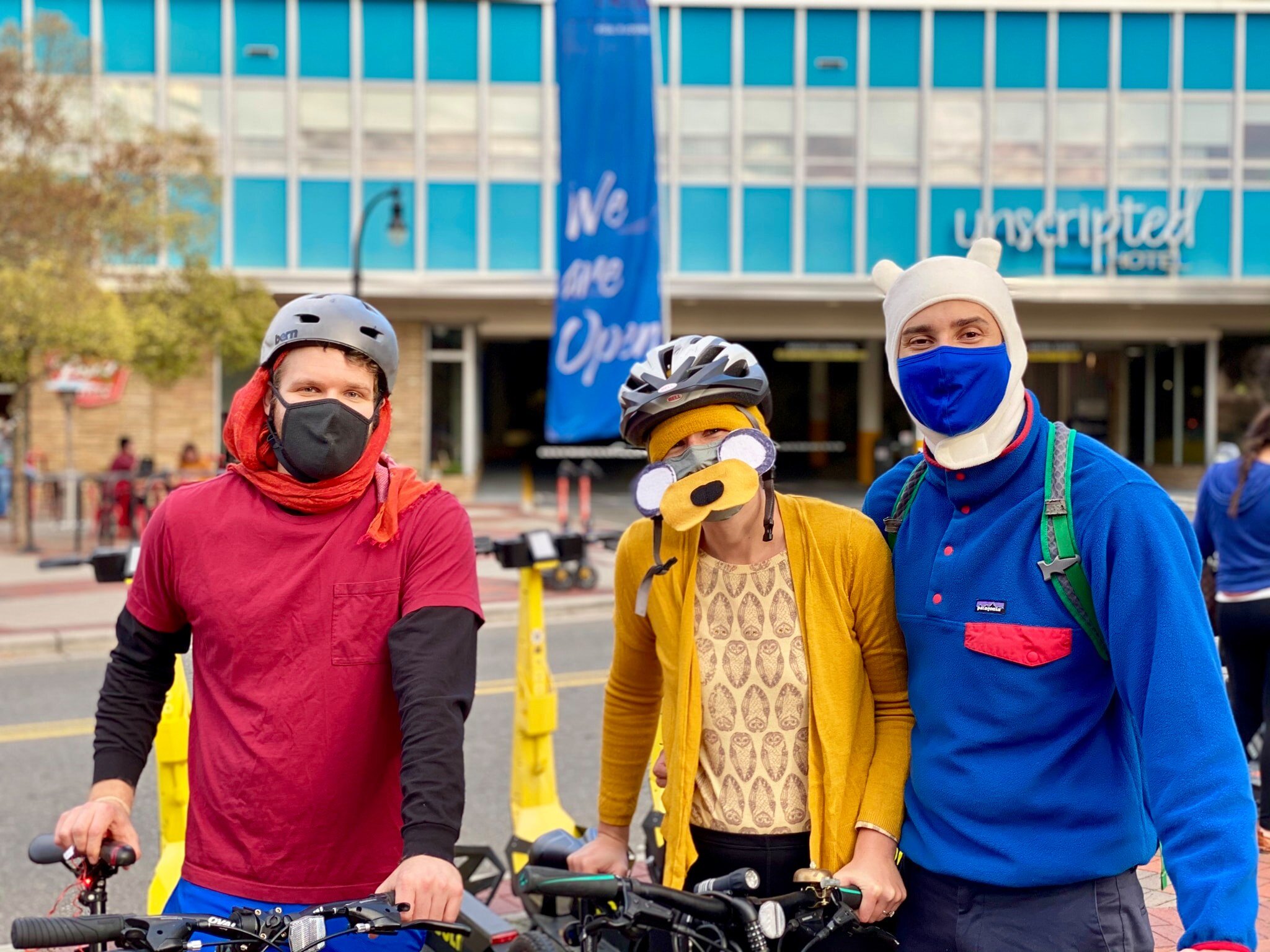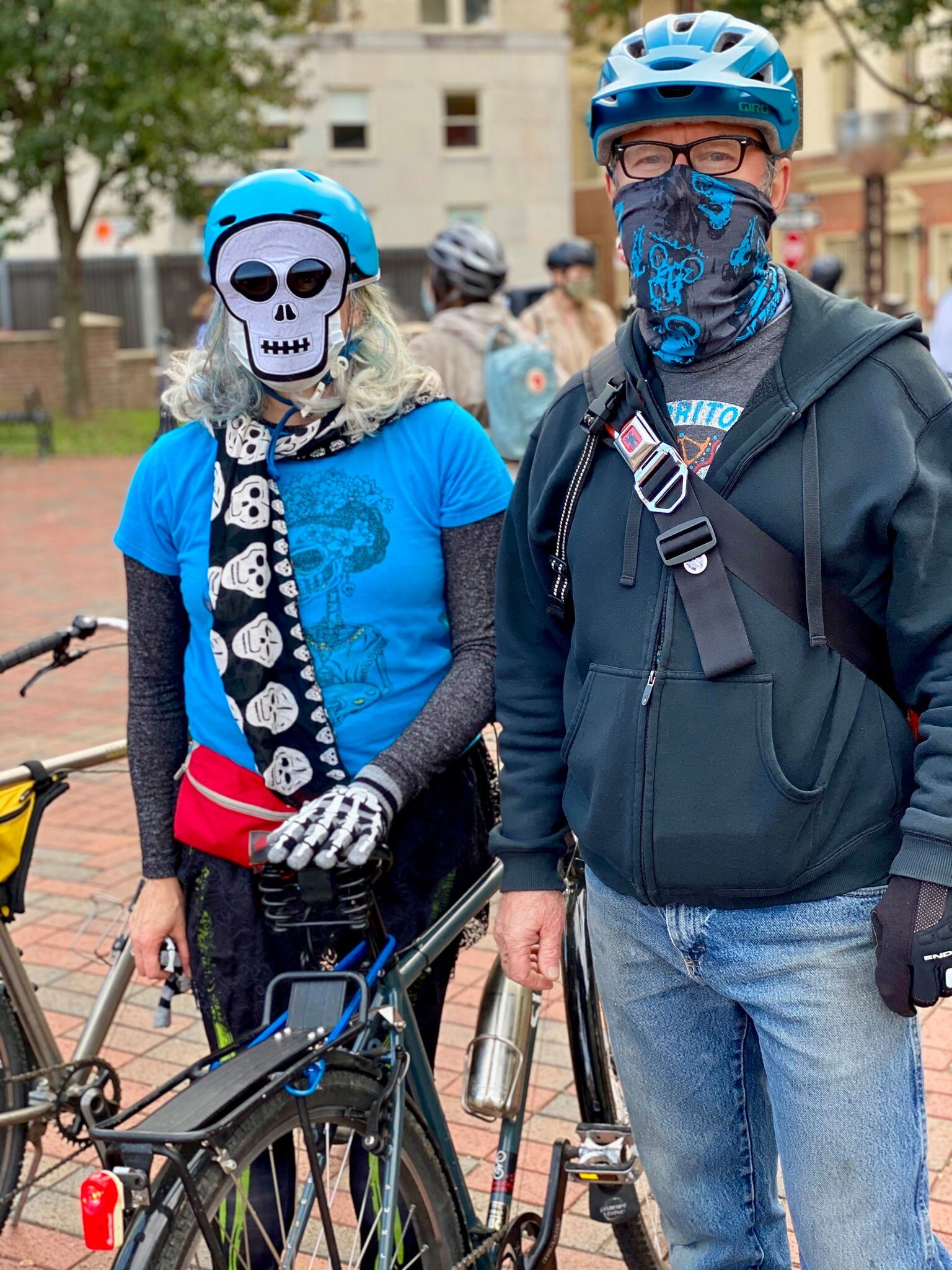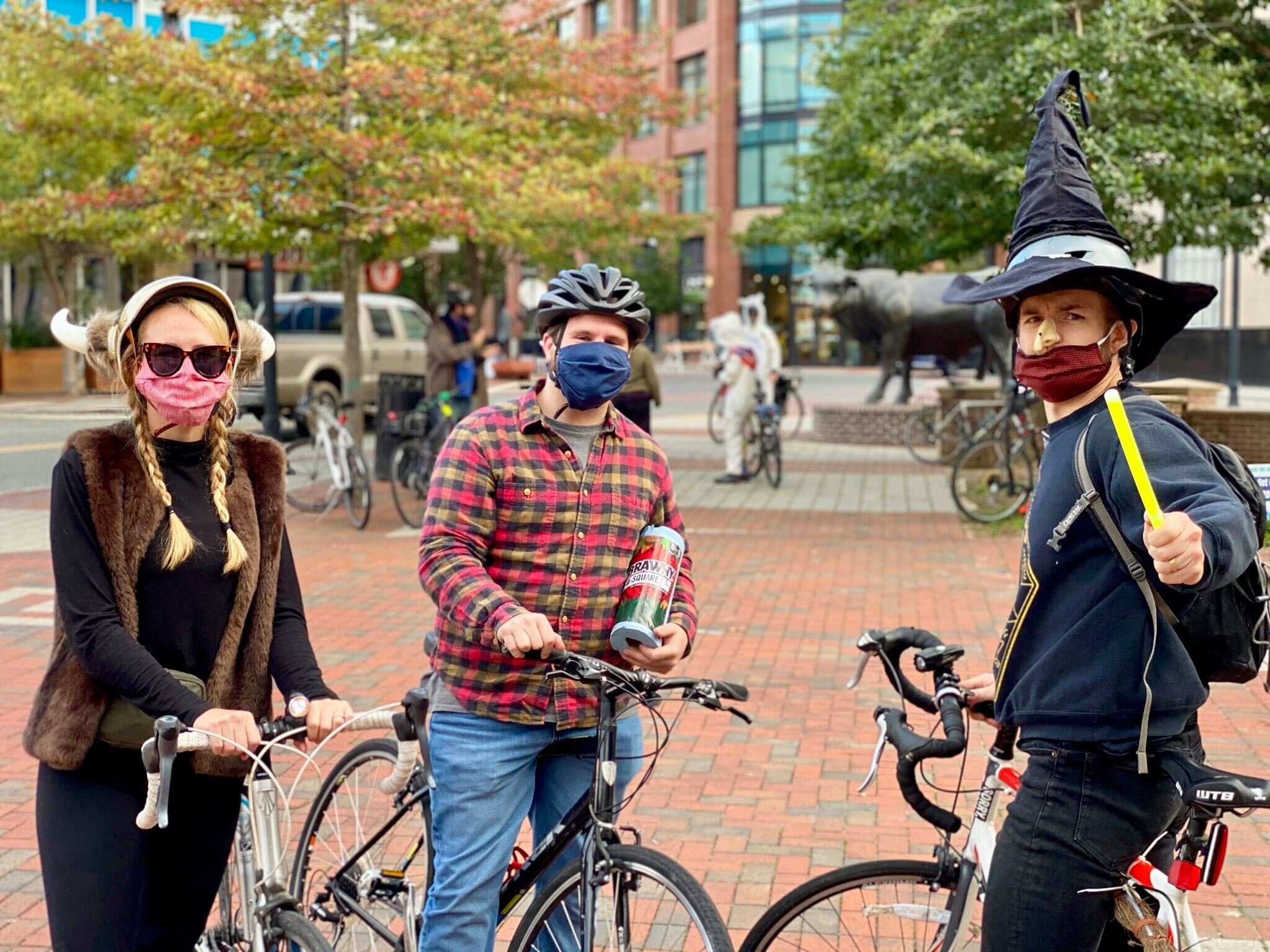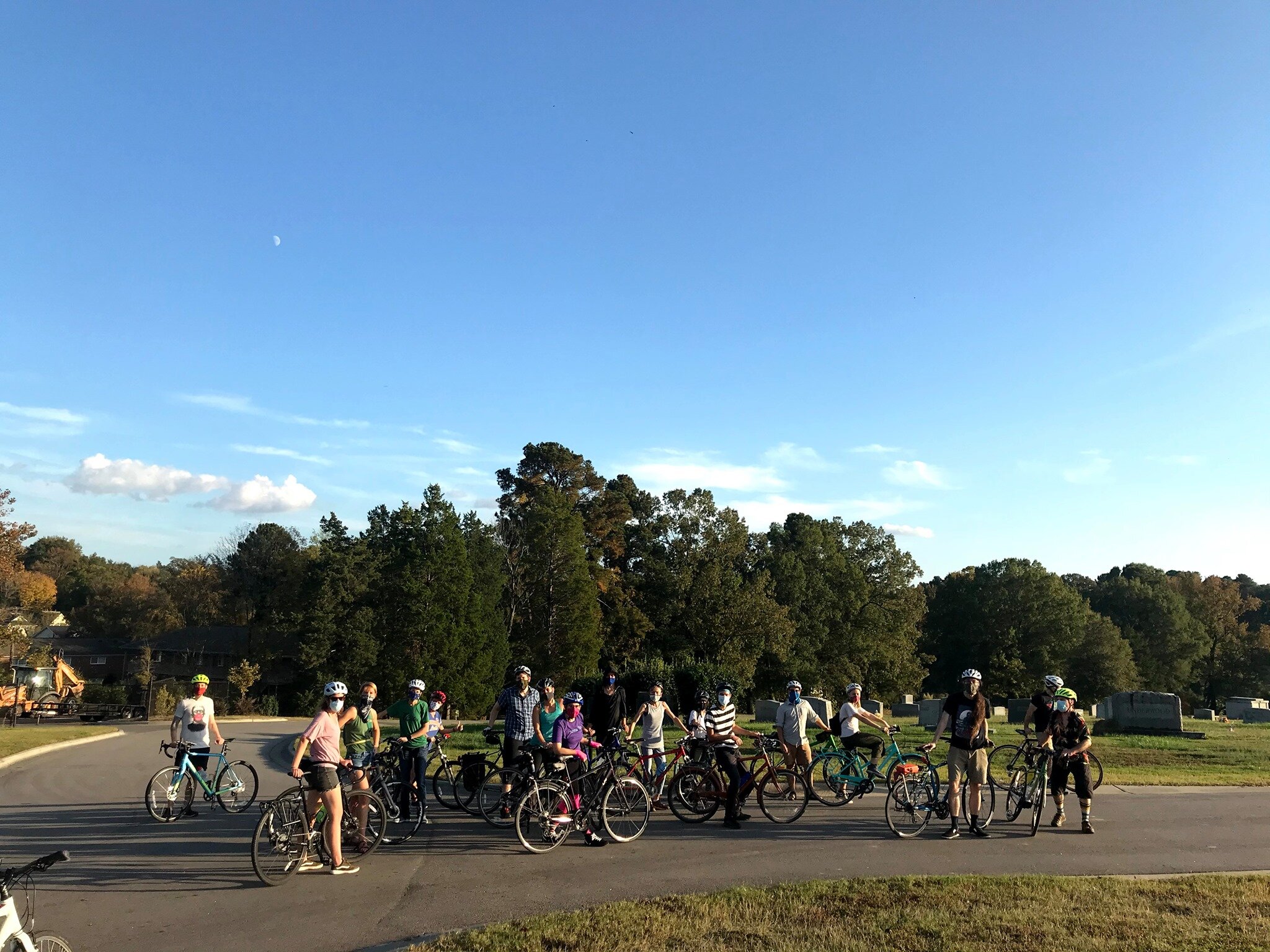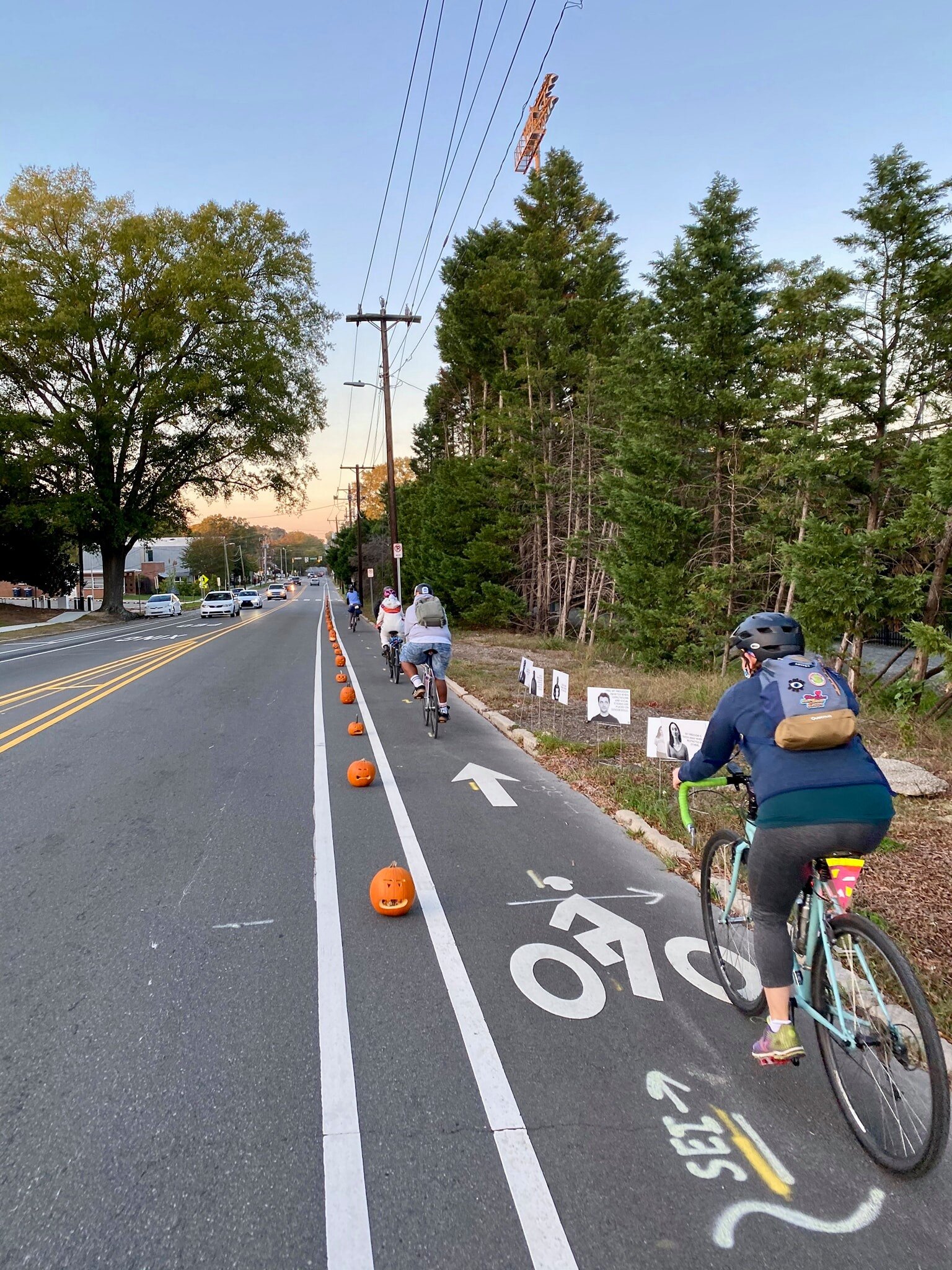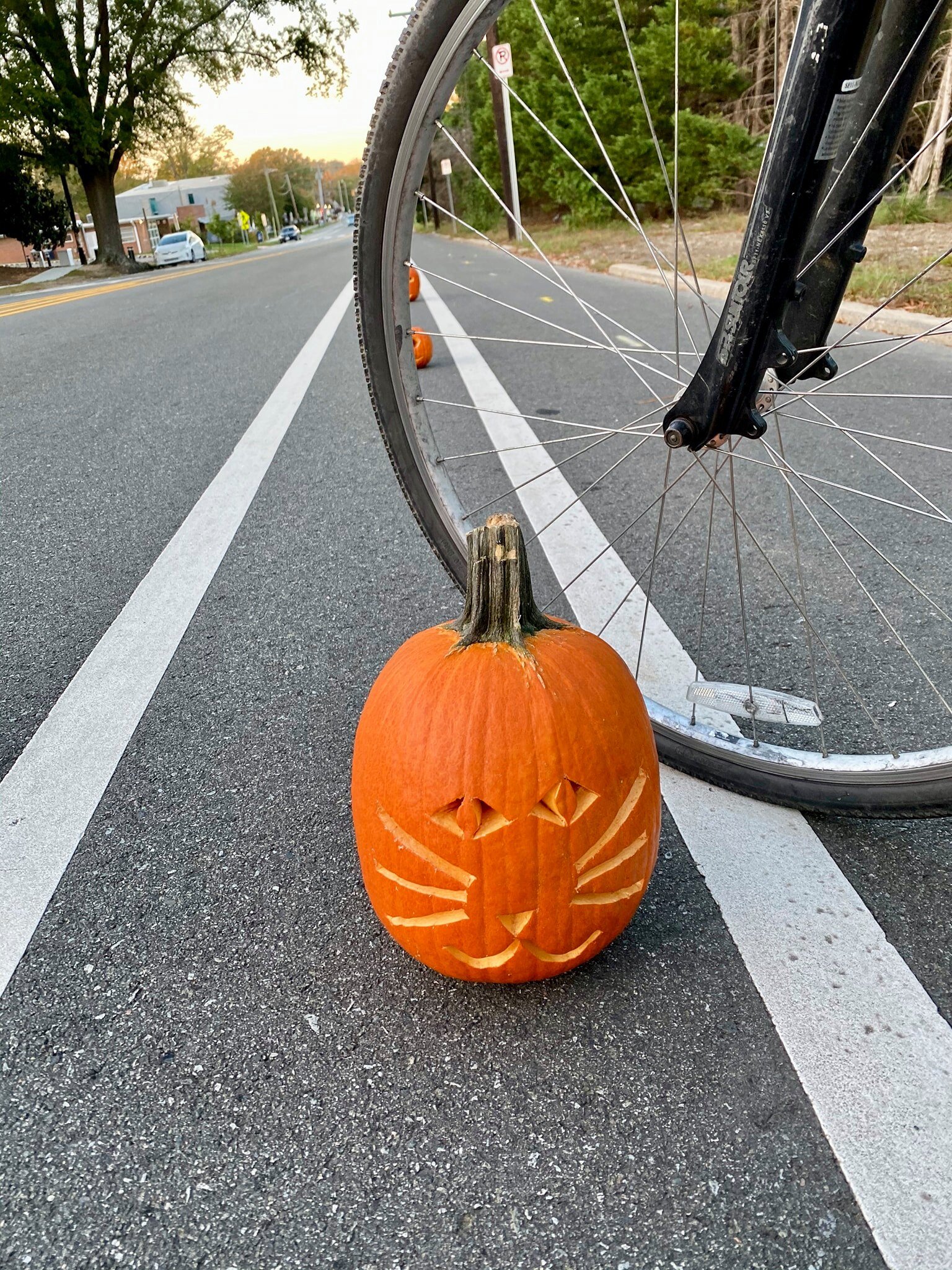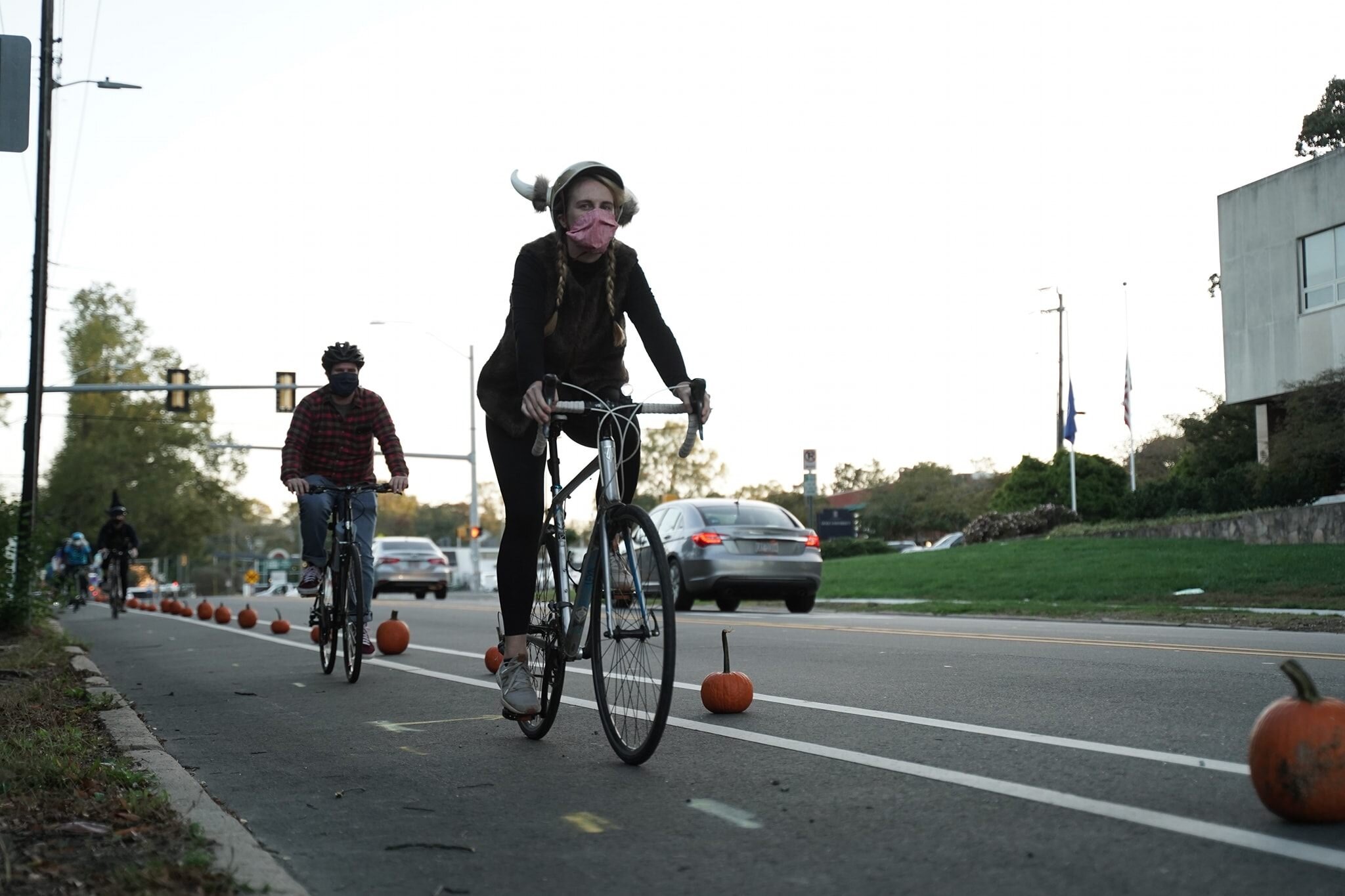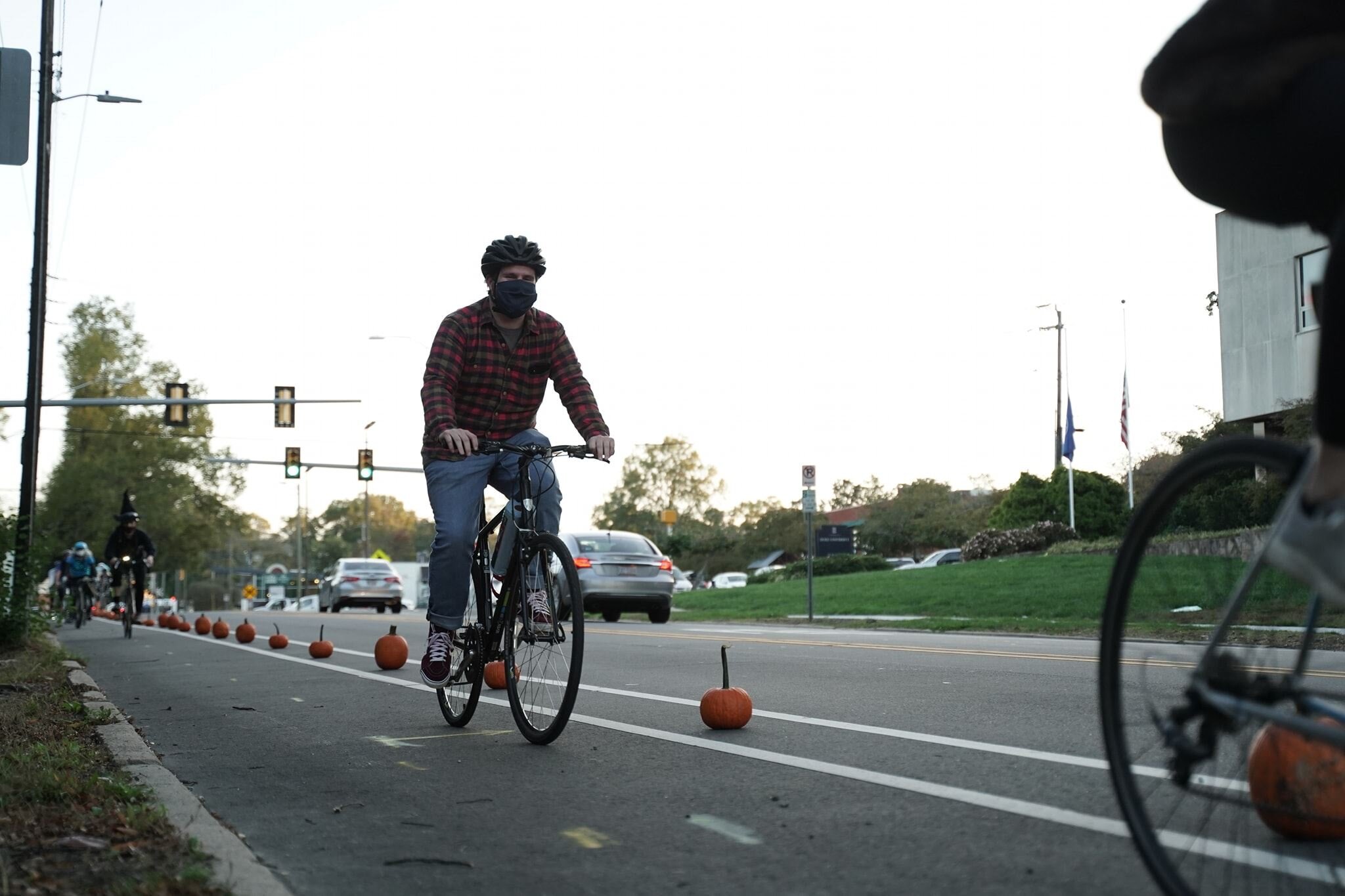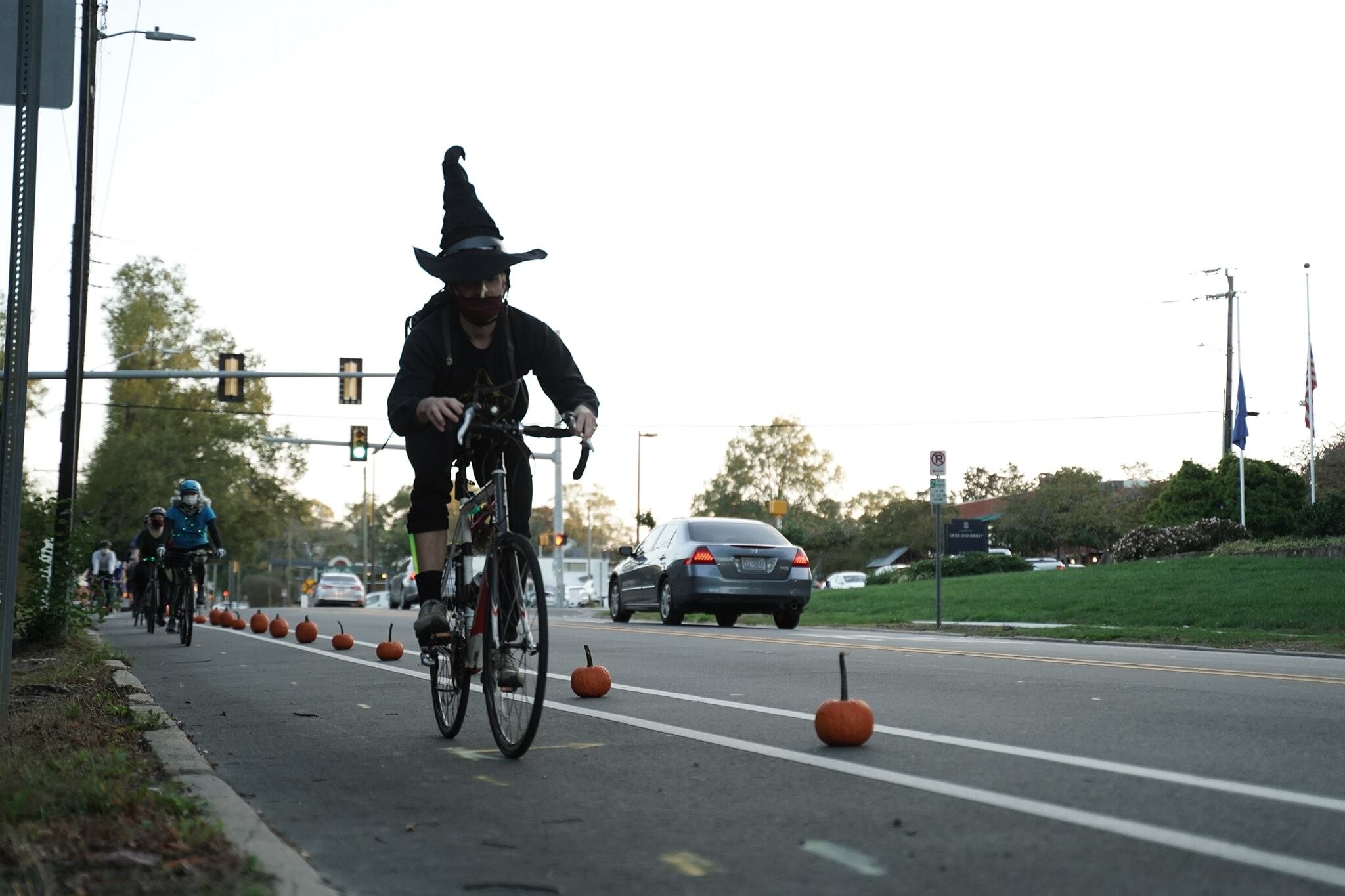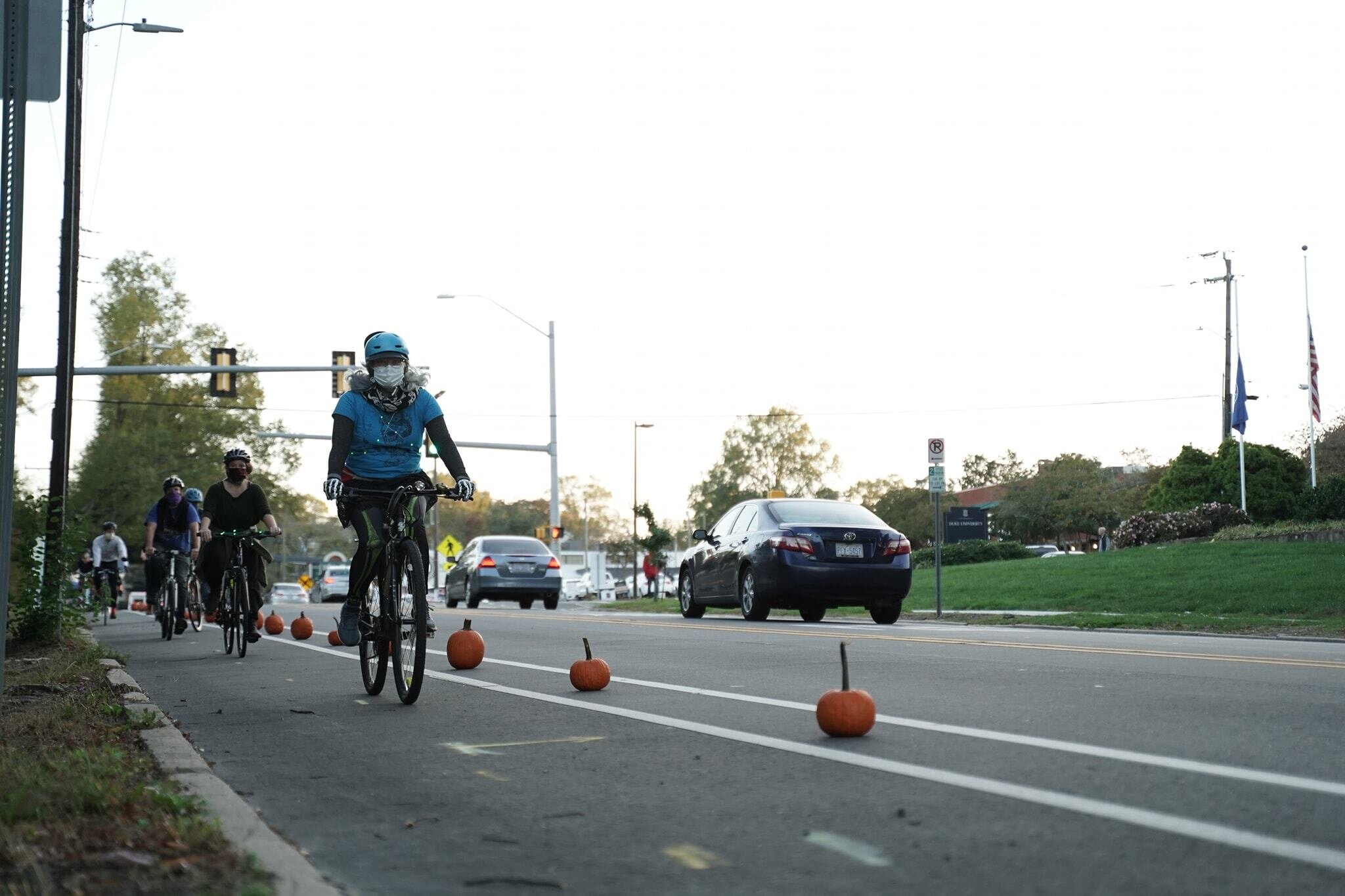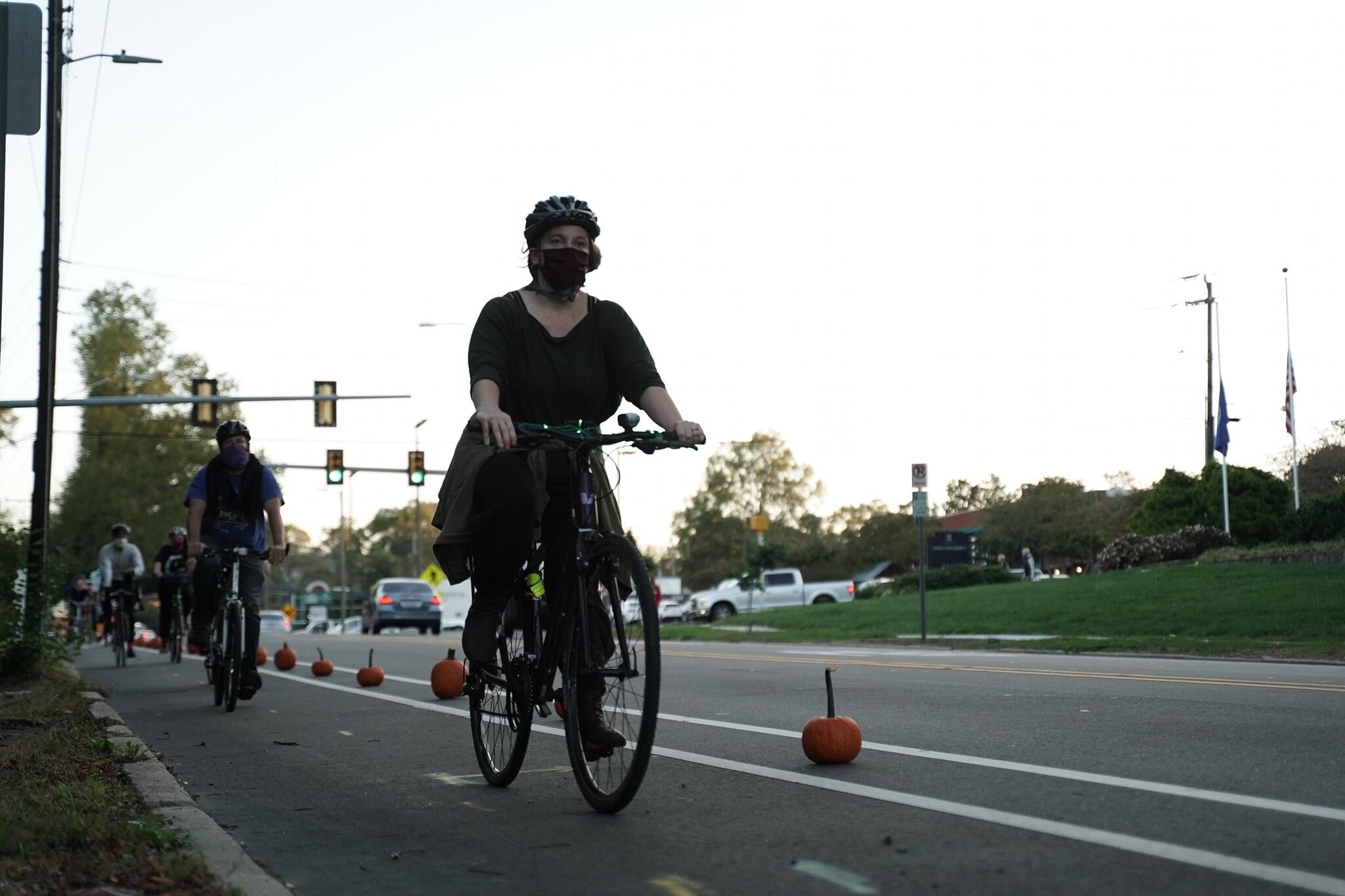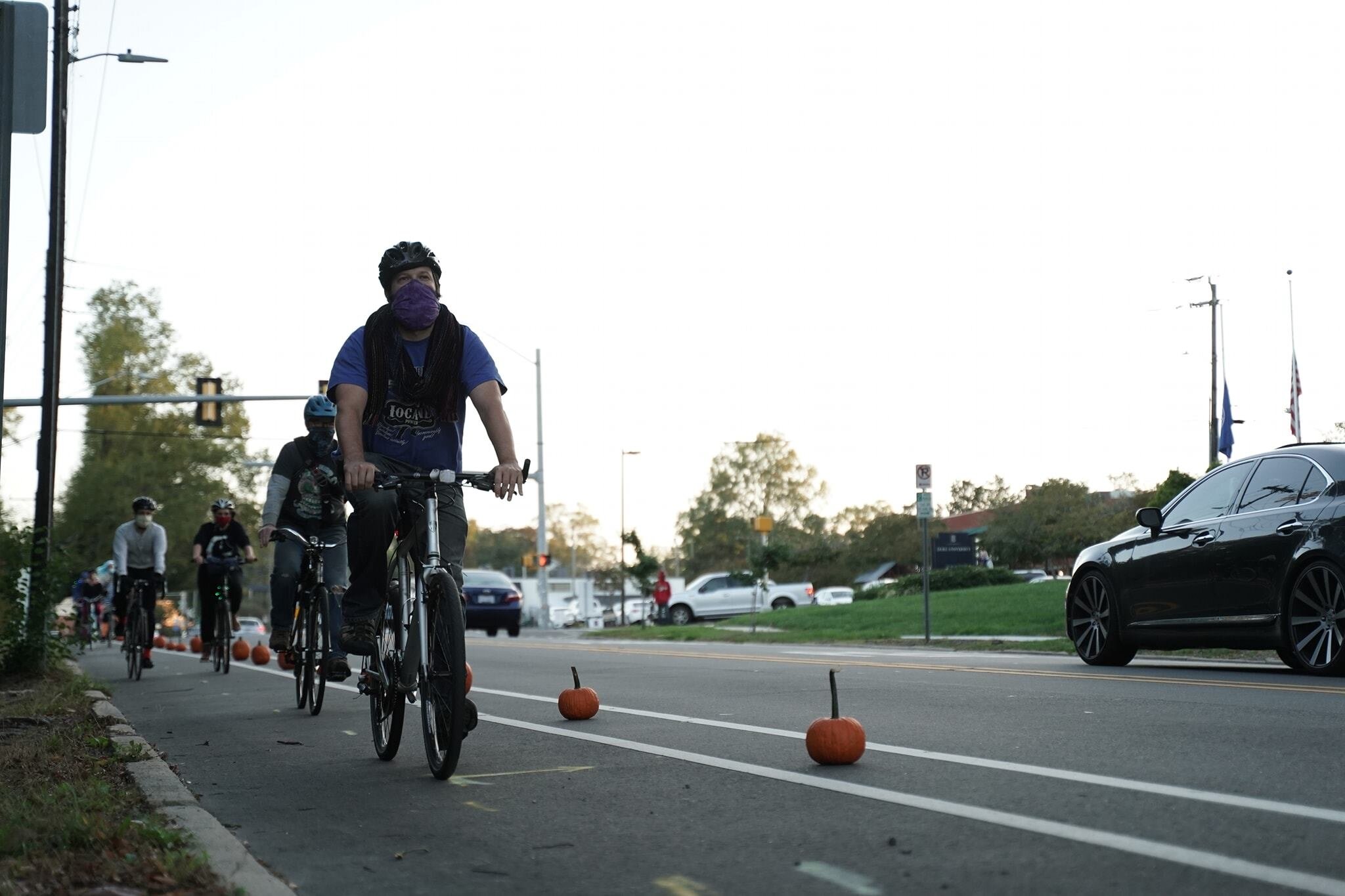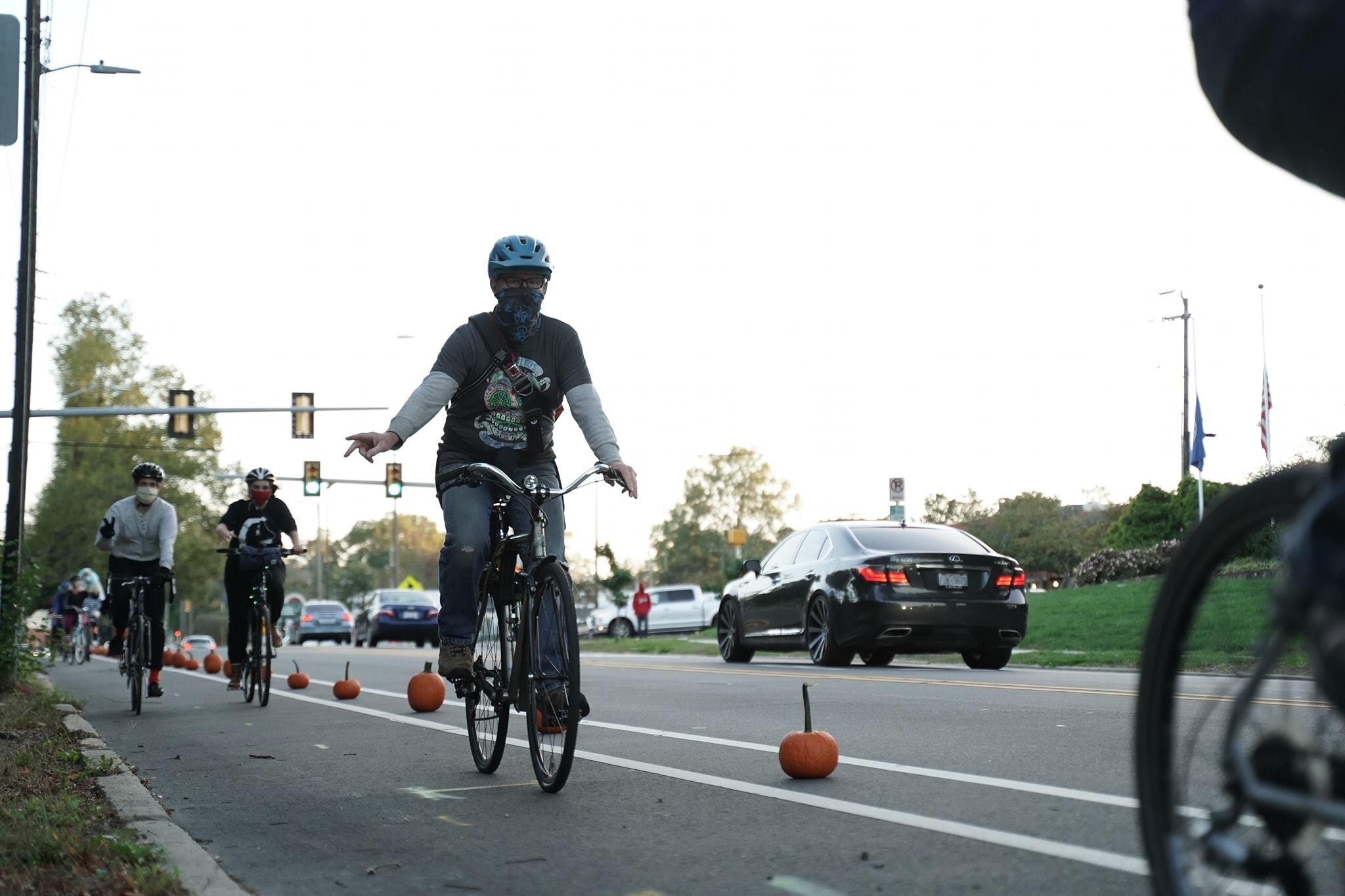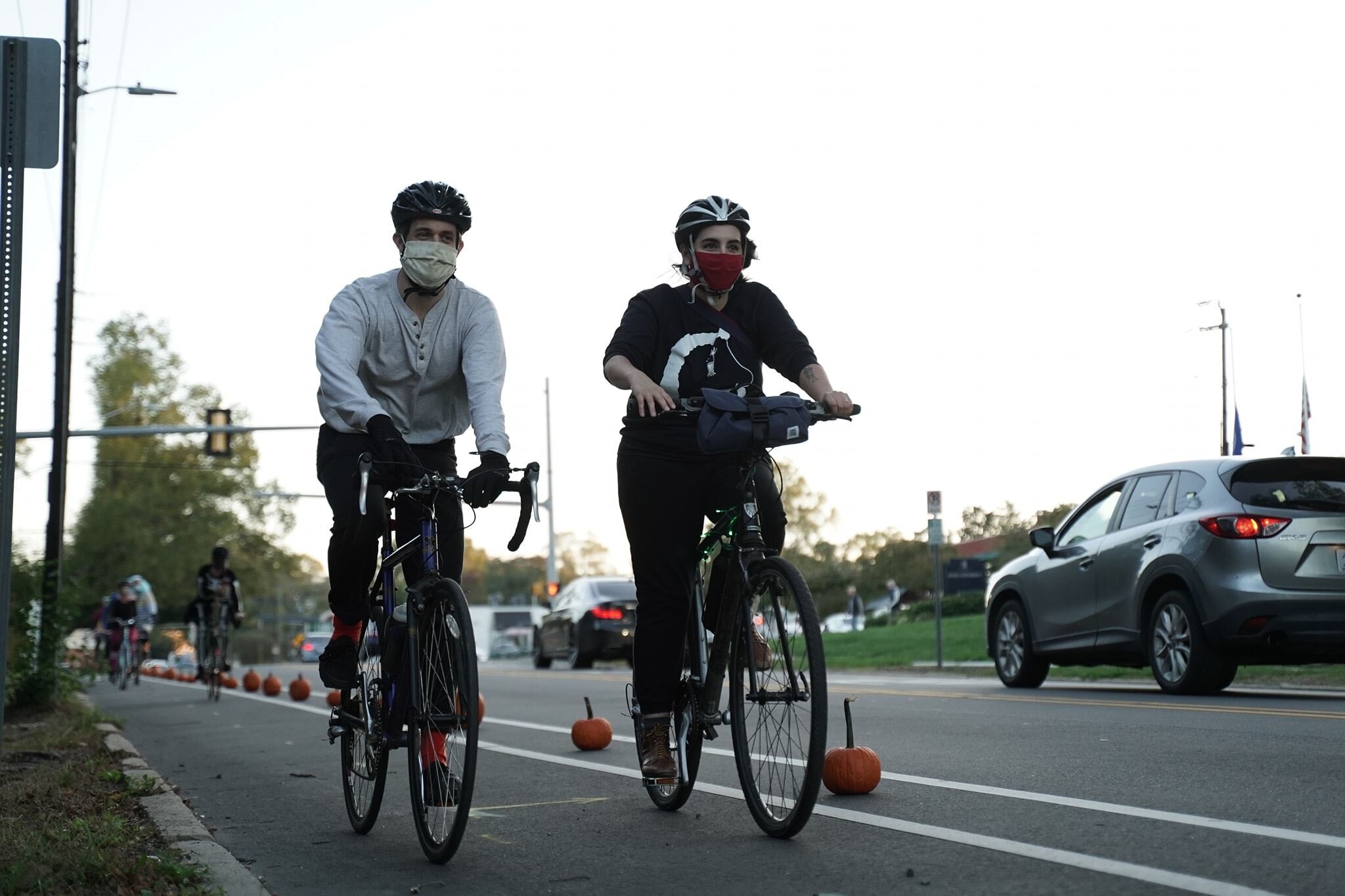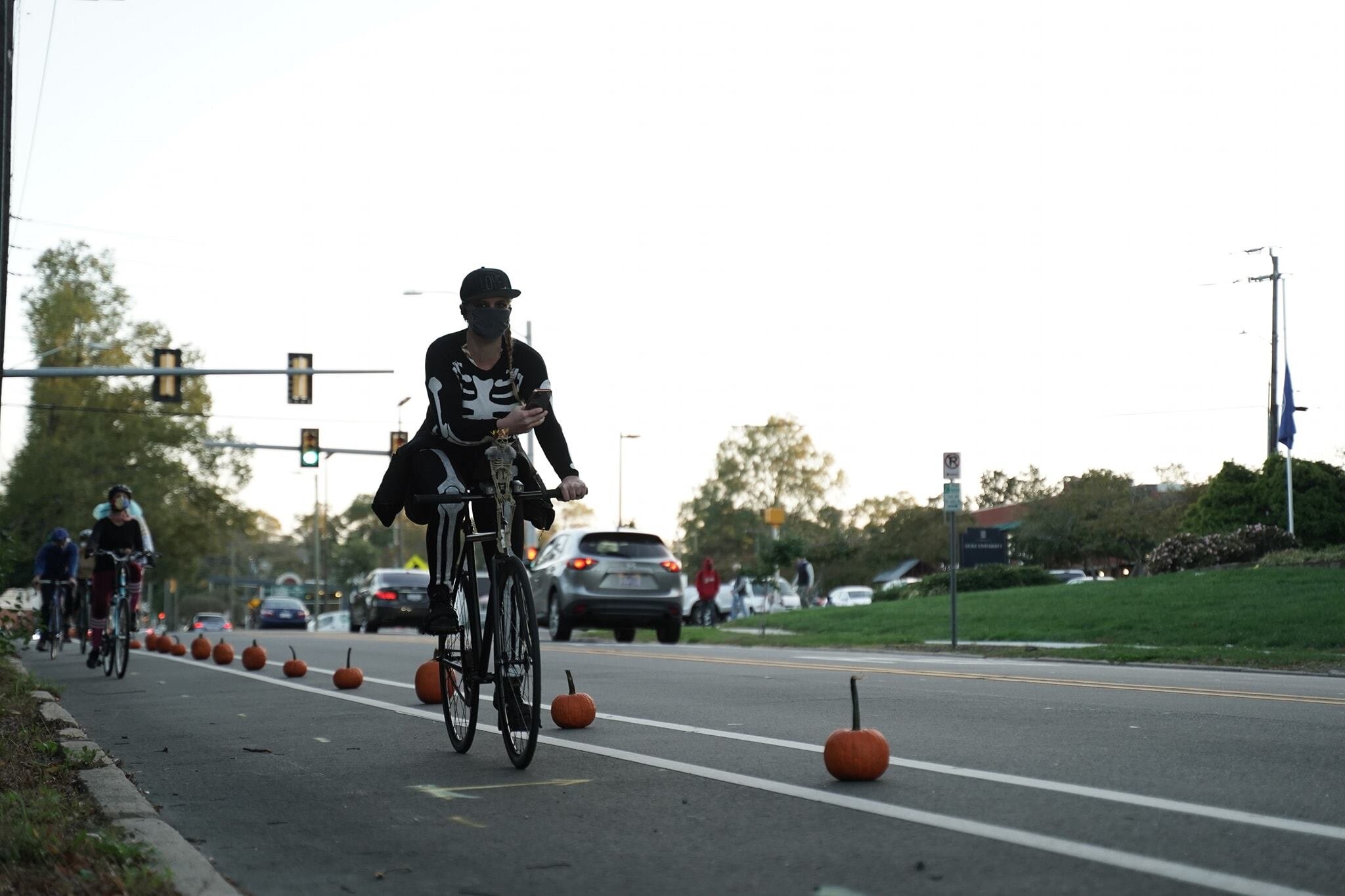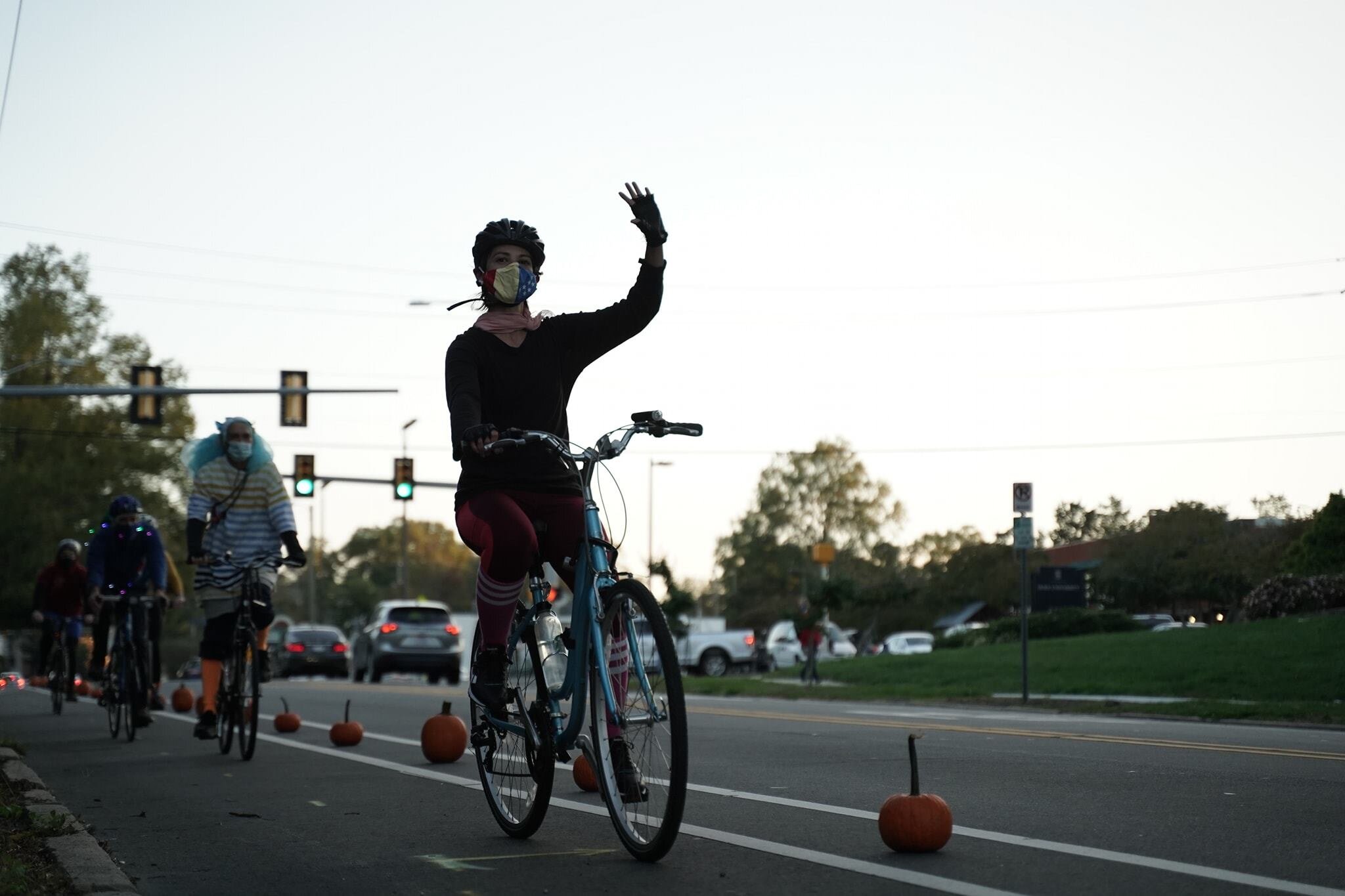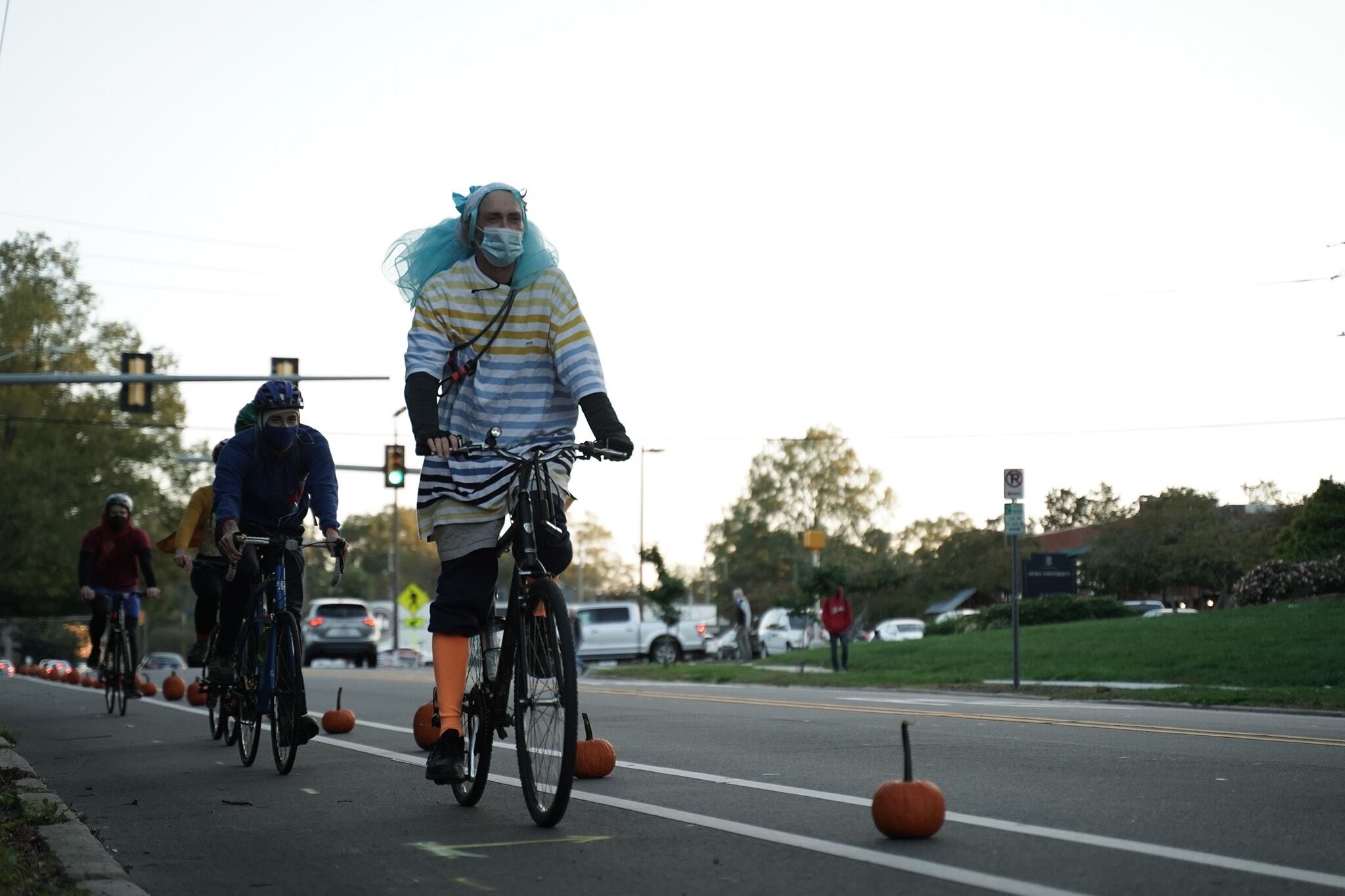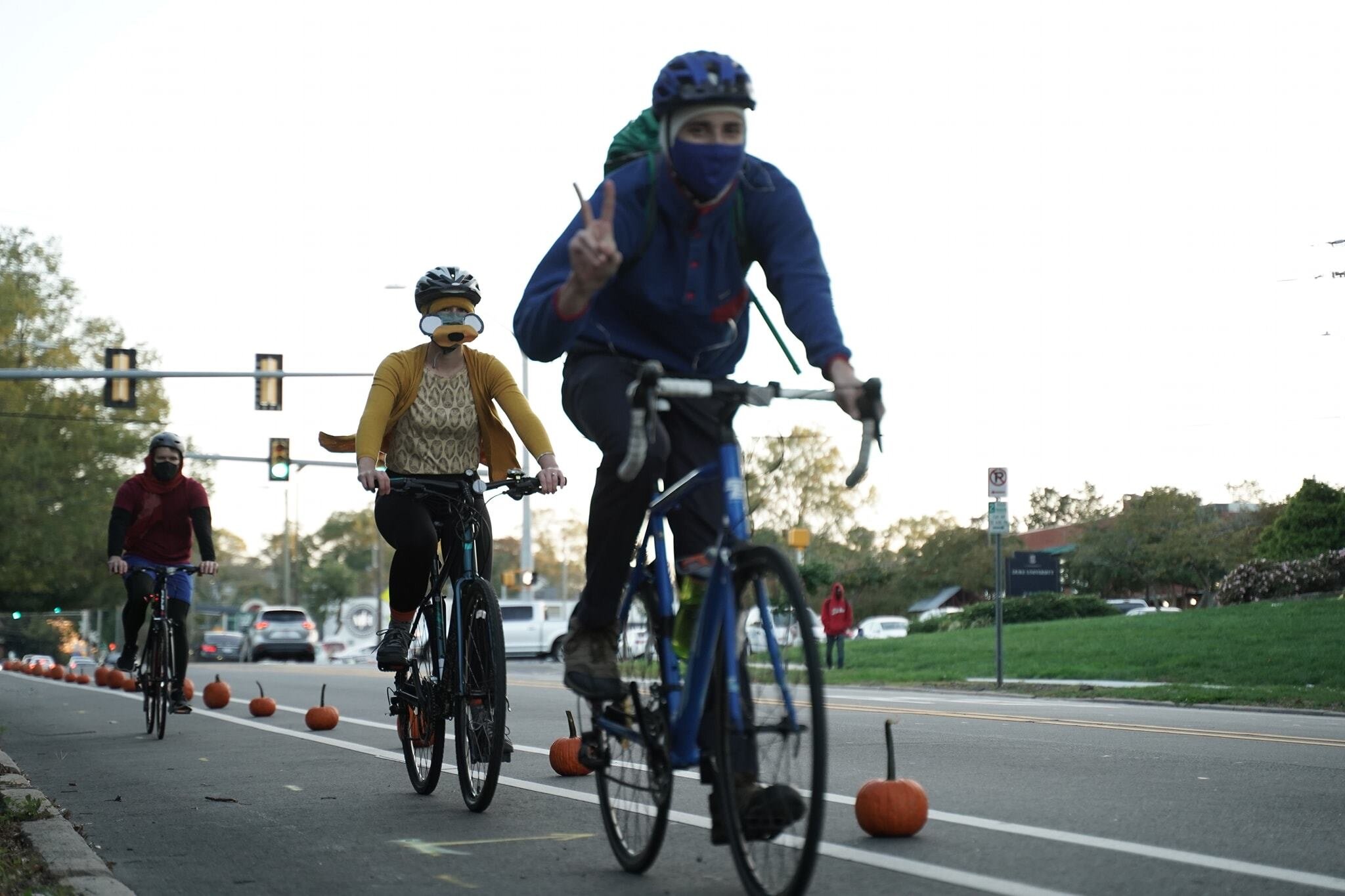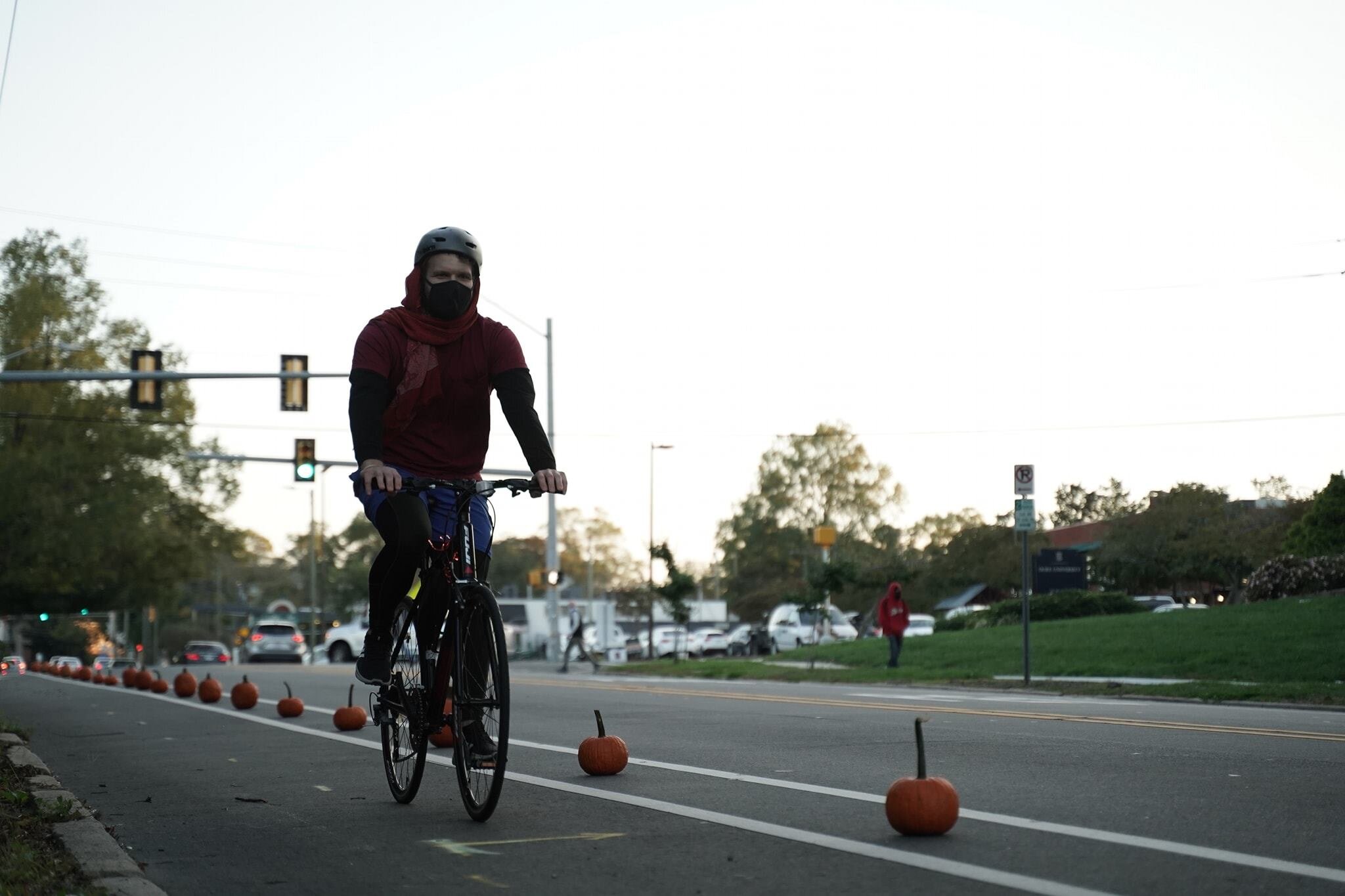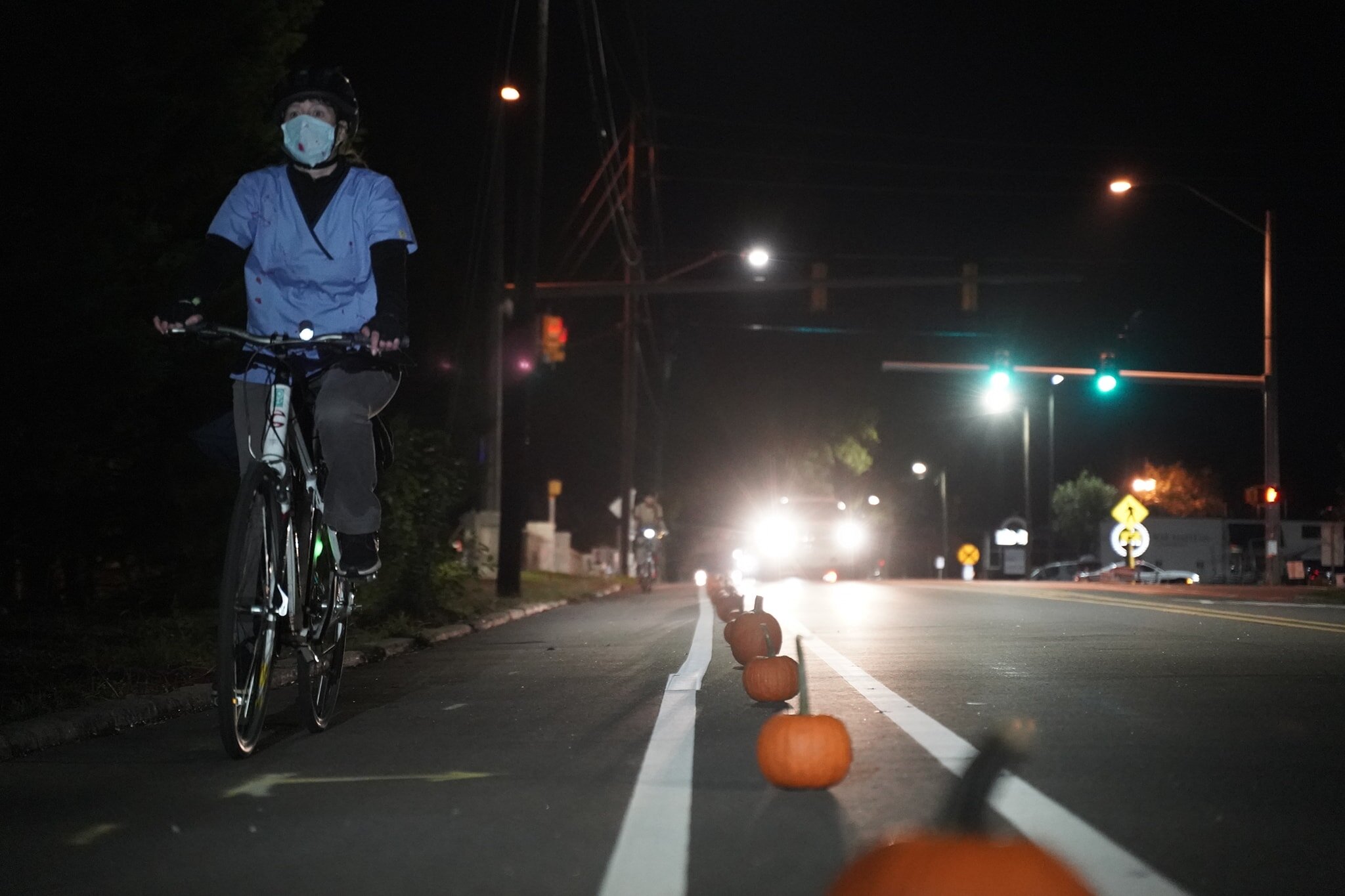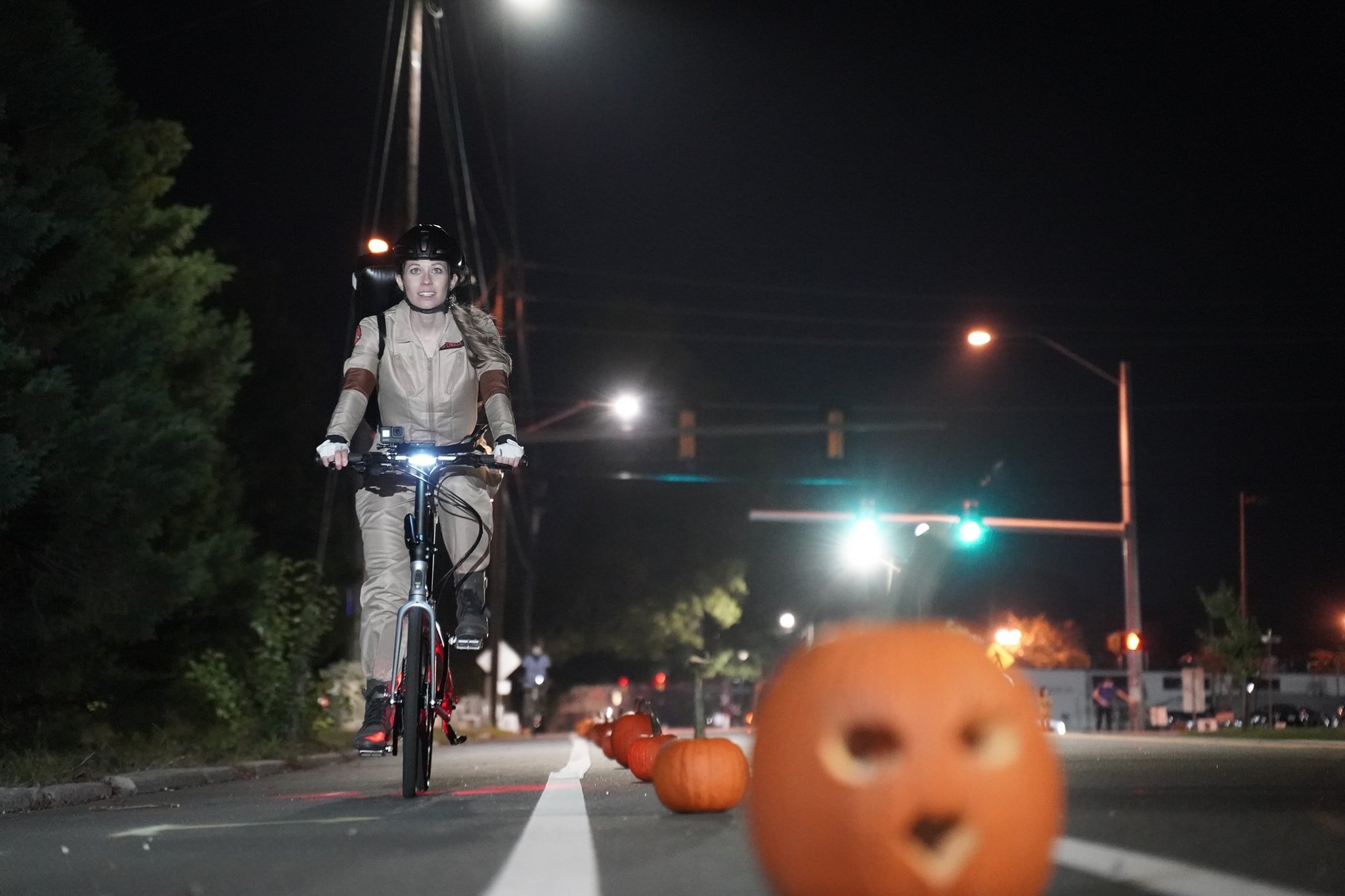It began with a discussion by Bonita Green, president of the Merrick-Moore community club, about unsafe road conditions in that neighborhood. Next, Oxford Manor community leader Tammy Ferrell spoke on the streets in her area.
Then Patrick McDonough, AICP; Rick Plenge, PE, PTOE; and Michelle Podeszwa, PE, all of HDR, Inc., shared their experiences working with state and local transportation departments to develop street designs that are safer for people walking and biking.
The webinar ended with a brief Q&A. Text from the chat is as follows:
From Charlie Reece: Hi everybody, this is Charlie Reece from the Durham City Council. Great to see y’all, looking forward to this webinar.
From Zack Hawkins: I appreciate this webinar, as well. Zack Hawkins, NC House District 31. Look forward to getting the recording to share out on my page, if permissible.
From SpiritHouse NC: I love this kind of background.
From Erik Landfried (he/him), Bike Durham: It's frightening to even drive on Cheek Road.
From SpiritHouse NC: It is frightening.
From SpiritHouse NC: There is a city process for speed bumps but it is a very difficult process.
From Bonita Green: Merrick Moore has worked with DPD and DSO to do speed traps. This works for a while but eventually the speeding starts again.
From Kevin Young: Yeah, I've tried to ride on Old Oxford. It's nuts.
From Kevin Young: Thank you Tammy.
From Molly De Marco (she/her): Thanks Tammy!
From Zack Hawkins: Thanks for sharing.
From Constance: There are huge traffic issues on Belvin Ave at Danube. Potholes, narrow streets. Also at East Club to Glenbrook Dr.
From Kevin Young: Agreed Constance, no space on East Club, it's hairy.
From Kevin Young: May I ask please, are there any DOT people in this meeting/presentation?
From Mary-Jo Gellenbeck: Thank you promoting low-cost implementations to generate faster improvements.
From John Tallmadge, he/him, Bike Durham: I don’t think so, Kevin. Richard Hancock from Division 5 had registered, but it doesn’t appear that he has been able to join.
From Kevin Young: Thanks John.
From John Tallmadge, he/him, Bike Durham: North Roxboro Street is a 4 lane road like that.
From Kevin Young: John, it is, but it's not nearly as wide as this image.
From Kevin Young: This is cool, looks cool in the illustrations. John, let's do this on Roxboro. And Tammy, on old Oxford.
From Matthew Clark (he/him): My question is for John or folks with the City. Durham’s transit tax brings in millions of dollars every year. Could that revenue be used to purchase streets from NCDOT if the purchase is part of a larger plan for a safe, reliable, and sustainable transit and mobility system in Durham? And what are the pros and cons of doing something like that?
From Bonita Green: What low cost suggestions do you have for two-lane rural roads with no shoulder?
From Constance: How did these projects affect neighborhoods as far as destruction, especially lower-income and neighborhoods with limited investments?
From Charlie Reece: Mr. Clark, thanks for that question. That’s certainly possible, but there are lots of competing needs that need to be addressed by the Durham transit tax (including robust funding for our bus system). But I’d also point out that the transit tax is collected by Durham County, not the city of Durham, and our friends at the county commission determine the spending priorities for those funds.
From Charlie Reece: I need to step away but I will watch this Q&A section later once the recording is posted. Many thanks to everyone for a great event!
From Bonita Green: The lanes are very narrow. Resurfacing is the only improvement that has been done.
From Zack Hawkins: Thanks everyone. Look forward to being in touch. Good job Bike Durham and HDR.













